2023 in Review
No replays 😊
In order finished
In order finished
193 Games
A mistake.
A mistake but the scene in the car with Stinger Flynn is an actual spectacle.
Impressive how Rodney Greenblat's designs carry a rhythm game with one of the worst songlists of all time.
More Jumping Flash isn't a bad thing, but without innovation it feels like an expansion pack.
Agonisingly adorable, gorgeous set pieces, extremely comfy, comprehensible despite a language barrier.
Played this during a meeting 👍
Falls apart towards the end but its early twists on E1 are shockingly disturbing -- who knew moving a switch could invoke ennui.
Psyop.
Not even John Goodman can redeem a Parroty Interactive game.
Midwestern emo.
When the faithful remaster is faithful.
The most fun I got out of Street Fighter 6 was trying to top the leaderboards in this.
It's no Son Son!!!
Fortnite.. JAPAN
It's REALLY no Son Son.
Bearing witness to three Americans and a Brazilian all claiming they know more about the UK than the others.
Not quite the same without a touch screen but it's still EO and that's enough for me.
Maybe I'm cynical but I think Kirby is at its best when it's a regular Kirby game and not some quick and dirty spin-off like this or Air Ride.
Hosting this over Parsec for four other people, none of whom remember their button binds, screaming fruitlessly for none of them to hit Orange at the end of character creation, utterly powerless to prevent this potential tragedy is the closest a game has come to replicating the feeling of living during the Cuban Missile Crisis.
Oh my god.
To the programmer that coded the remaining time to give you 200 points per second but only 2,000 per minute (ie. 1:12 grants 4,400 points), I commend your vague understanding of math and humbly concede it took me thirty minutes to realise you messed up.
Oh my god.
OH MY GOD.
CHRIST
Amazing how much fun you can have with a single text field!
Cute OoT-like, though the expansive world is to its detriment when I'm dragging my sorry ass across the map because I forgot something.
I hesitate to call this is a game in the truest sense since it feels more like a logic puzzle for six year olds.
How was I supposed to know you weren't supposed to play this one. Fun jank if laborious and difficult.
🎵Adventures of Lolo 1 and 2🎵
🎵King's Knight, Dig Dug🎵
🎵Chew-Man-Fu🎵
🎵King's Knight, Dig Dug🎵
🎵Chew-Man-Fu🎵
If there games are gonna be designed for Twitch streamers they could at least cost 100x more so I'm not tricked into thinking it'll be fun for me and my friends.
"You're just depressed because you play Sonic the Hedgehog without any QoL improvements"
Cool now I'm suffering through Labyrinth Zone with a Bubble Shield in widescreen 👌
Great as a decompilation that lets me play in widescreen but the litany of options and tweaks are the real source of interest for indecisive Sonic nerds like myself. Sonic Frontiers took its own approach to the Goldilocks dilemma with its bevy of customisation options, but the confined space of 2D Sonic simply isn't conducive to heaping on tons of alterations. The Drop Dash feels great in Green Hill Zone's wide fields, but it offers nothing beyond that. Same with the Spin Dash. And the Super Peel Out. The Elemental Shields make segments of Marble Zone and Labyrinth Zone more tolerable, but they feel tacked on.
As with every Sonic game, the systems in place in the original are intentional, with the levels designed around those constraints. Messing with the formula is fun for a moment, but it is hardly an improvement. It is interesting to see how quickly the game falls apart with the verticality afforded by Tails, Knuckles, and Amy, but if I'm blowing past the stages and their obstacles is that really an improvement, or am I just admitting I don't really like the core experience to begin with?
It's all clearly done with love but I'd rather keep things vanilla.
Cool now I'm suffering through Labyrinth Zone with a Bubble Shield in widescreen 👌
Great as a decompilation that lets me play in widescreen but the litany of options and tweaks are the real source of interest for indecisive Sonic nerds like myself. Sonic Frontiers took its own approach to the Goldilocks dilemma with its bevy of customisation options, but the confined space of 2D Sonic simply isn't conducive to heaping on tons of alterations. The Drop Dash feels great in Green Hill Zone's wide fields, but it offers nothing beyond that. Same with the Spin Dash. And the Super Peel Out. The Elemental Shields make segments of Marble Zone and Labyrinth Zone more tolerable, but they feel tacked on.
As with every Sonic game, the systems in place in the original are intentional, with the levels designed around those constraints. Messing with the formula is fun for a moment, but it is hardly an improvement. It is interesting to see how quickly the game falls apart with the verticality afforded by Tails, Knuckles, and Amy, but if I'm blowing past the stages and their obstacles is that really an improvement, or am I just admitting I don't really like the core experience to begin with?
It's all clearly done with love but I'd rather keep things vanilla.
Subtler and all the better for it.
Though the grafting of Sonic 3 & Knuckles and Sonic Mania' mechanics onto Sonic the Hedgehog only emphasised how much of an outlier the first Sonic is, here they serve to supplement an already great game. The introduction of the Spin Dash, and levels better built around Sonic's improved speed and handling (and Tails' game-busting flight), means the Drop Dash and Super Peel Out are not at odds with the core experience. The Flame Barrier and Lightning Shield become options rather than borderline cheating. With Knuckles already playable in the original with Lock-On Technology, his inclusion doesn't feel like afterthought (though it's a shame there's no Amy).
Widescreen and being able to actually see the Special Stages was already more than enough, everything else is a cherry on top.
Though the grafting of Sonic 3 & Knuckles and Sonic Mania' mechanics onto Sonic the Hedgehog only emphasised how much of an outlier the first Sonic is, here they serve to supplement an already great game. The introduction of the Spin Dash, and levels better built around Sonic's improved speed and handling (and Tails' game-busting flight), means the Drop Dash and Super Peel Out are not at odds with the core experience. The Flame Barrier and Lightning Shield become options rather than borderline cheating. With Knuckles already playable in the original with Lock-On Technology, his inclusion doesn't feel like afterthought (though it's a shame there's no Amy).
Widescreen and being able to actually see the Special Stages was already more than enough, everything else is a cherry on top.
Forager 2 (disparaging)
A mistake.
game SUCKS i go to BED
In typical Game Freak fashion, this is technology from a decade ago being paraded around like it's cool when it's Pokemon. Accelerometers tracking your movement in the night certainly works as a means of tracking sleep, but integration with wrist trackers, smartwatches, and smart rings (and AI beds? Whatever that even means?) have allowed a greater degree of fidelity for users. Sleep as Android has been doing a damn good job of telling me I have horrible sleep hygiene for a decade, only improving with time. It has recommended ways of improving my sleep, alarms that go off only when I'm in a light sleep cycle so I'm less groggy, 'captchas' were I can only turn off my increasingly loud alarm with math, or tapping an NFC point, or shaking my phone like it owes me money. Not only am I firmly entrenched in my current sleep tracker, it has always been frictionless. I tap a widget, I put my phone beside me, I sleep.
Pokemon Sleep shows a fundamental misunderstanding of why sleep trackers are used, how they are presently used, where the market lies, and how the gamification of life actually works. This isn't Habitica or Fabulous trying to improve your life through things you don't already do. I have no choice in whether or not I sleep. The appeal of a sleep tracker is that it is set and forget, a companion for something I have to and will do anyways, so it better not be an annoying partner. If Pokemon Sleep wants the user to be concerned about the quality of their sleep, shouldn't it be able to sync up with existing hardware that can supplement its readings? If sleep is meant to be restorative, why is that rejuvenation immediately undone by tutorialisation and currencies and systems and a goddamn battle pass when I wake up? Why am I chastised when I wake that I only got 54/100 sleep points because I woke in the night and can only get 5-6 hours of sleep a night if I'm lucky? Why is the assumption that 8.5 hours of sleep is a perfect ideal for everyone to aim for? Why is there no accommodation for the peculiarities of the human sleep experience, for the insomniac, the narcoleptic, the medicated? The very least it could do is offer a sleep quiz, or a calibration period. The very least it could do is not inundate me with things I have to learn and keep in mind. The very least it could do is not make my phone radiate enough heat that my wrist tracker thinks something is wrong. The very least it could do is not eat 80%(!!!) of my battery at night so I panic when I wake up. And for the chronically eepy like me, the bare minimum amount of effort could be put towards not having a minutes-long load-screen before I can track my sleep. Last night I passed out waiting for it to complete. Y'know what it took for my wrist tracker to document my sleep last night? Nothing.
Wholly uncompromising in its grandiose, buckling vision. Crumbling under the weight of its world of ideas. Breakneck and glacial, confused and confusing. To call it a flawed masterpiece is an admission that it is a masterpiece all the same.
The plot is frequently limp, characters incensed by seemingly random motivations. The world folds out into eternity while railroading the Regalia to a two lane highway. The ache for reprieve from ballooning stakes goes eternally unanswered. What starts as a granting of ever more freedoms becomes a collapse of everything being taken away from the player bit by bit. An unceasing tide of fetch quests forgotten in a shift to eternal linearity. Yet none of this takes away from the experience, it only reinforces a consistent theme of loss and trade-offs.
The first playable moments bring this into laser focus. The iconic Regalia, a literal symbol of freedom carries nothing but unfulfilled promises as it is laboriously pushed across the desert. When it is repaired, Noctis receives a single opportunity to drive his steed, only to discover he is no more in control of it behind the wheel than he is as a passenger. It is often a hindrance, barely moving at night, unable to ever meaningfully approach points of interest, as manoeuvrable as a train on the tracks. Yet each time it is taken away, the notion of freedom dissipates, eventually passing forever into history. Similarly, the temporary departure of party members makes what were once mechanical nothings into tangible absence; Gladio, Prompto and Ignis all bringing something crucial yet invisible to the dynamics of the party and combat.
This typifies what the Final Fantasy XV experience is; one of dashed expectation. Chase down your MacGuffin of a betrothed only for her to fade away. Collect a litany of ingredients, lures, paint jobs, CDs, quests, hunts, medals all for it to become meaningless in an instant, no indication that the time for a relaxed approach has drawn to a close. The only fragment of a 'road trip with the boys' being memories made concrete through Prompto's photographic documentation of the journey. Much as one might scoff at an overabundance of filters, selfies, extreme angles, and inadvertent captures of Gladio's ass, these joyful glimmers of what was and could have been resonate with nostalgic depression. When our story draws to a close, all we have to remember it by are our memories. Wishes that it had gone better, not just for ourselves, but for those who would walk a doomed path.
The plot is frequently limp, characters incensed by seemingly random motivations. The world folds out into eternity while railroading the Regalia to a two lane highway. The ache for reprieve from ballooning stakes goes eternally unanswered. What starts as a granting of ever more freedoms becomes a collapse of everything being taken away from the player bit by bit. An unceasing tide of fetch quests forgotten in a shift to eternal linearity. Yet none of this takes away from the experience, it only reinforces a consistent theme of loss and trade-offs.
The first playable moments bring this into laser focus. The iconic Regalia, a literal symbol of freedom carries nothing but unfulfilled promises as it is laboriously pushed across the desert. When it is repaired, Noctis receives a single opportunity to drive his steed, only to discover he is no more in control of it behind the wheel than he is as a passenger. It is often a hindrance, barely moving at night, unable to ever meaningfully approach points of interest, as manoeuvrable as a train on the tracks. Yet each time it is taken away, the notion of freedom dissipates, eventually passing forever into history. Similarly, the temporary departure of party members makes what were once mechanical nothings into tangible absence; Gladio, Prompto and Ignis all bringing something crucial yet invisible to the dynamics of the party and combat.
This typifies what the Final Fantasy XV experience is; one of dashed expectation. Chase down your MacGuffin of a betrothed only for her to fade away. Collect a litany of ingredients, lures, paint jobs, CDs, quests, hunts, medals all for it to become meaningless in an instant, no indication that the time for a relaxed approach has drawn to a close. The only fragment of a 'road trip with the boys' being memories made concrete through Prompto's photographic documentation of the journey. Much as one might scoff at an overabundance of filters, selfies, extreme angles, and inadvertent captures of Gladio's ass, these joyful glimmers of what was and could have been resonate with nostalgic depression. When our story draws to a close, all we have to remember it by are our memories. Wishes that it had gone better, not just for ourselves, but for those who would walk a doomed path.
It's just my life.
Any boys out there that look like Gladio, hit me up
Sonic CD so good when you don't got a bitch in your ear telling you it's labyrinthine.
🥹 why
When Ketsui is shrunk down for imode phones, it's cute. This ain't cute.
Dares to justify the Playdate's tilt controls.
Ralph Baer and Howard Morrison Simon, i sleep
Tetsuya Mizuguchi Simon, real shit?
Tetsuya Mizuguchi Simon, real shit?
Batman, can you solve my hardest riddle yet: a three lap time trial race?
Precision.
Tedious, durational bliss. A reclamation of time through singular labour. The hyperconnected, hyperonline, hyperalways world of today does not allow us to take a step back and enjoy an act for its own sake, and the simplicity of counting grains of rice digitally, as in Marina Abramovic's Counting the Rice exercise forces the mind to slow down. So caught up in the act of counting, of organising, of breaking down an insurmountable task into something able to be completed that no thought intruded, no anxiety fomented. Me, and the rice. Even trying to bring stimulus into the space through music, or the spoken word brings into focus the distracting nature of the world. It did not serve to entertain or assist my task, it served to keep me from its total completion.
As Abromavic argues, "the only time we don't think, it is scientifically proven, is when we sneeze and when we orgasm," but through a slow, intentional act we can approach something close to the thoughtless state. For hours my mind was rice, and all was as it should be.
As Abromavic argues, "the only time we don't think, it is scientifically proven, is when we sneeze and when we orgasm," but through a slow, intentional act we can approach something close to the thoughtless state. For hours my mind was rice, and all was as it should be.
Stick to the soundtrack.
Too clunky for even I.
A mistake.
Gorgeously animated
Total War for bozos (me).
Ostensibly a recruitment attempt by the JSDF made hysterical by its admission that the biggest dangers to the Maritime Self-Defense Force are rocks and tree limbs.
Plague Inc made into a clicker dressed in transfemme (but also autogynephilic (not that autogynephilia is a thing)) clothing. Femdemic, like gender and sexuality, is complicated. It is composed of too many independent truths to label it as wholly affirming or fetishistic. It instills profound sadness, regret, and frustration, not only with itself, but with the real world. It makes me feel horrible, happy, hollow. It confuses me. Since Femdemic labels itself as both trans-affirming and kink-affirming, it's only fair to look at it under two distinct lenses.
As a gender-affirming work (though the Liberation mode), Femdemic has you effectively playing the role of HRT under the guise of a microbe. You feminise your subject so they can spread to all the transwomen on the planet. Changes made to the host are subtle, slow, and limited -- there is no facial feminisation, no height changes, minimal alteration to the genitalia, some breast growth, some fat redistribution. In this capacity, Femdemic is shockingly honest with the limitations of non-invasive gender care on the AMAB body, in a way that is usually reserved for downvoted Reddit threads and doomposting on /lgbt/. Perhaps due to the primary focus on trans women, all sexual encounters only occur with other trans women, which is probably fine as sex is not the primary focus of Liberation, but it seems reductive in part of how trans women might express their sexuality. There is no engagement with cis women, nor cis men. As I'm not a trans woman, only a transfeminine NB, I can't speak to how positive of an experience this actually is, but at least it doesn't delve into full-blown fetishistic territory.
Compliance mode is full-blown fetishistic territory. Breasts balloon outward, the penis shrinks to the point it become a vagina, heights dwindle, the increased libido of the host has them in perpetual ahegao before they either perform oral sex on a man, or get fucked. If there was any doubt as to what the player actually is, here it become clear; you are an STD. The host can only have penetrative sex once they have a vagina. This PIV-centrism reads as a doubling down on the ignorance of how sex occurs; is the suggestion that heterosexual men have no interest in a pre-op trans woman? That trans women can't have sex with cis women (or other trans women for that matter)? That trans women, through their heterosexuality, in some way shed their yaoi hole? Is the host even a trans woman? Compliance doesn't render this particularly crystalline, but the need to dominate the host's immune system and irrevocably alter their identity to diminish the perceived negative effects of feminisation, and the emphasis on converting biological men leaves Liberation in a weird psychosexual gray area that's a mix of sissy hypnosis, gooning, forced feminisation, autogynephilia, transvestism, and transmedicalism.
Putting these affirming halves aside, Femdemic is simply one of the laziest applications of the Plague Inc. and clicker formulas I've seen in a while. The loop is rote, you always feminise a host, spread, reset your progress for some light bonuses, and do it again. None of the management involved in Plague Inc. rears its head. And you click to barely speed up an arduous process that puts even lengthy eroge VNs to shame. There isn't even the smallest joy of seeing number go up, just that of maxing your producers, closing the game, and coming back so you can see the boobs become more seeable or watch one of two animations of IMVU characters participating in what might be called sex.
As a gender-affirming work (though the Liberation mode), Femdemic has you effectively playing the role of HRT under the guise of a microbe. You feminise your subject so they can spread to all the transwomen on the planet. Changes made to the host are subtle, slow, and limited -- there is no facial feminisation, no height changes, minimal alteration to the genitalia, some breast growth, some fat redistribution. In this capacity, Femdemic is shockingly honest with the limitations of non-invasive gender care on the AMAB body, in a way that is usually reserved for downvoted Reddit threads and doomposting on /lgbt/. Perhaps due to the primary focus on trans women, all sexual encounters only occur with other trans women, which is probably fine as sex is not the primary focus of Liberation, but it seems reductive in part of how trans women might express their sexuality. There is no engagement with cis women, nor cis men. As I'm not a trans woman, only a transfeminine NB, I can't speak to how positive of an experience this actually is, but at least it doesn't delve into full-blown fetishistic territory.
Compliance mode is full-blown fetishistic territory. Breasts balloon outward, the penis shrinks to the point it become a vagina, heights dwindle, the increased libido of the host has them in perpetual ahegao before they either perform oral sex on a man, or get fucked. If there was any doubt as to what the player actually is, here it become clear; you are an STD. The host can only have penetrative sex once they have a vagina. This PIV-centrism reads as a doubling down on the ignorance of how sex occurs; is the suggestion that heterosexual men have no interest in a pre-op trans woman? That trans women can't have sex with cis women (or other trans women for that matter)? That trans women, through their heterosexuality, in some way shed their yaoi hole? Is the host even a trans woman? Compliance doesn't render this particularly crystalline, but the need to dominate the host's immune system and irrevocably alter their identity to diminish the perceived negative effects of feminisation, and the emphasis on converting biological men leaves Liberation in a weird psychosexual gray area that's a mix of sissy hypnosis, gooning, forced feminisation, autogynephilia, transvestism, and transmedicalism.
Putting these affirming halves aside, Femdemic is simply one of the laziest applications of the Plague Inc. and clicker formulas I've seen in a while. The loop is rote, you always feminise a host, spread, reset your progress for some light bonuses, and do it again. None of the management involved in Plague Inc. rears its head. And you click to barely speed up an arduous process that puts even lengthy eroge VNs to shame. There isn't even the smallest joy of seeing number go up, just that of maxing your producers, closing the game, and coming back so you can see the boobs become more seeable or watch one of two animations of IMVU characters participating in what might be called sex.
A mistake.
Gave us muddy cum woman.
Once you get past the pains of this not being a Tony Hawk's Pro Skater, this is incredible. The throughlines are wondrous, the tagging sublime, the music blows Future out of the water.
Tails and the Harsh Noise Wall Maker
Cinematic puzzlery before we were ready. Suzuki Bakuhatsu astounds with its production values, abound with turn of the millennium photography, set dressing, apparel, and unbridled contentment. For as harrowing as the premise is, that the mundane has been overtaken by sophisticated explosives, the often devil-may-care attitude of Rin Ozawa's character suggests a subconscious understanding that this danger could never really happen. This is a world before the War on Terror, before we were made to feel unsafe by government and terrorists alike. Why not watch a bomb defusal expert hurriedly carry out her craft on stage, how could the worst possibly come to pass?
These vague plot points and extensive production are indicative of Sol and Enix's attempt to break the conventions of the stagnant puzzle genre. Tetris and Panel de Pon with new coats of paint were not enough. Kula World and iQ weren't thinking big enough. If the medium was to mature into a legitimate mode of storytelling (or at least entertainment) it needed bombast across all genres. The puzzle game could (and is shown to be) so much more than the puzzles themselves. It can be as tense as a thriller, as lighthearted as a situation comedy. Yet the puzzles too remain a highlight, with fully realised, complexly nesting polygonal designs which are explored in the round in a step above Resident Evil or Skyrim. The bombs are as the puzzle boxes seen in Fireproof Games' The Room, a series of self-affecting pieces, more involved than they let on. Suzuki Bakuhatsu simply would not work in a two-dimensional space.
Tomoyuki Tanaka's shibuya-kei interstitial compositions are as much a highlight as Rin Ozawa's humming during defusal, and the cast and crew are dripping with talent. On the variety show Suzuki inexplicably becomes a part of, we see Yukiko Ehara and YOU THE ROCK★ flanking Minami Shirakawa. Asami Imajuku, Haruichiban, and Kiyohiko Shibukawa make surprise appearances as well. Though not quite a who's-who of the Japanese entertainment industry, these familiar faces (especially two decades after release) demonstrate that Suzuki Bakuhatsu was all about bombast. In a world before Portal and Catherine, however, perhaps we were unprepared to accept that puzzle games could be something more.
These vague plot points and extensive production are indicative of Sol and Enix's attempt to break the conventions of the stagnant puzzle genre. Tetris and Panel de Pon with new coats of paint were not enough. Kula World and iQ weren't thinking big enough. If the medium was to mature into a legitimate mode of storytelling (or at least entertainment) it needed bombast across all genres. The puzzle game could (and is shown to be) so much more than the puzzles themselves. It can be as tense as a thriller, as lighthearted as a situation comedy. Yet the puzzles too remain a highlight, with fully realised, complexly nesting polygonal designs which are explored in the round in a step above Resident Evil or Skyrim. The bombs are as the puzzle boxes seen in Fireproof Games' The Room, a series of self-affecting pieces, more involved than they let on. Suzuki Bakuhatsu simply would not work in a two-dimensional space.
Tomoyuki Tanaka's shibuya-kei interstitial compositions are as much a highlight as Rin Ozawa's humming during defusal, and the cast and crew are dripping with talent. On the variety show Suzuki inexplicably becomes a part of, we see Yukiko Ehara and YOU THE ROCK★ flanking Minami Shirakawa. Asami Imajuku, Haruichiban, and Kiyohiko Shibukawa make surprise appearances as well. Though not quite a who's-who of the Japanese entertainment industry, these familiar faces (especially two decades after release) demonstrate that Suzuki Bakuhatsu was all about bombast. In a world before Portal and Catherine, however, perhaps we were unprepared to accept that puzzle games could be something more.
A little better than Guerilla but it's still a glupshooter, you can't fool me.
Oh my god.
Coco big boobs seeable
The sort of game a dude with an English major loves to wax poetic about to try and impress a goth lesbian enough that she'll fuck him.
Hi, I'm Joey.
Sorry, it's been a while since I played catch.
So you'll have to forgive me if my aim is off.
Nice throw!
You want to know how I've been?
I haven't been great lately.
I know we only started playing, but I can't pretend things are fine.
I should be honest, I haven't been great for a while.
Watching that ball pierce the air, I thought I should break the silence.
Maybe that was inappropriate, I'm sorry.
Good one!
What's that?
You don't mind?
I appreciate that, thank you.
It can be hard to get others to lend you an ear when you need it.
Why am I down?
Good question, I don't fully know.
For a while I thought it was missed medications.
Something tangible and real I could blame it on.
But I'm starting to think that's not the case.
You really don't mind talking about this?
If you'd rather just play catch that's okay too...
Okay, if you're sure...
I suppose it's fitting to have a heart to heart while we play catch.
We're taking turns.
Allowing each other space and time until we're called upon.
Sorry, just a silly thought.
I don't think it's the medication though.
At least, not anymore.
It feels more and more like a part of me is missing.
Maybe it always was, maybe I was just made aware of it...
★☆☆☆☆
Maybe what I'm missing is people.
It feels like people come and go a lot in my life these past few years.
I don't blame them, of course, things don't last forever.
But I still miss them.
Some were in real life. People move. People change.
I guess that's true online, too.
I'm guilty of coming and going myself.
It feels harsh in retrospect, but sometimes I feel so afraid and trapped and I have to run.
I'm sure it's that way for others, too.
I wonder if they know I miss them?
I wonder if they miss me, too.
★★☆☆☆
Maybe what I'm missing is time.
Since graduating university and the whole COVID thing, time doesn't seem the same.
I always have too much, but too little.
But when I feel like I have too much, it's nice to while it away.
Like we're doing now.
Thanks for playing with me, by the way.
I know you could be spending your own time in other ways.
With other people.
It's nice to be able to just talk.
When I feel I have too little time, I again become scared.
I fear I've spread myself too thin, made too many promises.
Like I'm trying to do too much.
And so much of it feels fruitless. Like the only one who cares is me.
Or worse, that not even I care.
Maybe that's a sign I shouldn't do the things I don't care about.
But that abandonment hurts as much as the slipping of time does.
★★★☆☆
Maybe what I'm missing is myself.
It feels all the time like I'm living a lie.
Like I'll break kayfabe at some point, and the old me will show itself.
But I know the old me is the same me as the me I am now.
Sorry, that was a marble-mouthed way to put it.
Still, it's as if I've given parts of myself to others.
And to the things I make and do.
Without giving myself time to regenerate those parts.
It's as if I'm letting genies out of bottles and hurriedly trying to shove them back in.
Like I'm scared of the consequences of my own actions.
I think I'm scared that I am who I am.
That my relationships, my life, simply are the way they are.
And sometimes things go great, we get to go a little longer.
Just like when one of us catches or throws perfectly.
We get to keep things going a tiny bit longer.
Just like when we reach a new level.
We get a deeper bond, a sense of fulfillment, and get to keep going.
Only I've been missing too many throws, fumbling more catches than I make.
And I know that one of these times, I'll turn to grab the ball.
Pleading that things can continue a bit longer.
Only to turn around, and see another person I'm playing catch with leave.
See another piece of myself leave.
★★★★☆
I'm sorry, I don't mean to cry.
This is supposed to be a nice game of catch.
And you were so nice to let me talk about myself.
And I've gone and ruined it.
Things always end up like this.
Maybe that's why I try not to get close to others.
I end up hurting them just as I hurt myself.
I end up needing more and more affirmation and validation.
I take and I take without giving back.
I'm making things worse, aren't I?
I just know when this is over, I'll have to go back to pretending things are fine.
And they just aren't.
★★★★★
If it's alright with you, I'd like to stop playing catch for now.
Thanks for letting me talk your ear off.
Despite the tears, I really enjoyed this.
And I really hope you'll play with me again.
Maybe next time I won't be so sad.
But maybe I will.
And maybe it won't matter.
Uhmm... I know this might be silly.
And that we don't really know each other that well.
But I hope I get to see you again.
Get to hear your voice again.
And until the next time, I hope with all my heart that things go well for you.
Or get better for you.
And until the next time, I will miss you tremendously.
Not because I'm sad you're gone.
But because I was so happy you were here.
Sorry, it's been a while since I played catch.
So you'll have to forgive me if my aim is off.
Nice throw!
You want to know how I've been?
I haven't been great lately.
I know we only started playing, but I can't pretend things are fine.
I should be honest, I haven't been great for a while.
Watching that ball pierce the air, I thought I should break the silence.
Maybe that was inappropriate, I'm sorry.
Good one!
What's that?
You don't mind?
I appreciate that, thank you.
It can be hard to get others to lend you an ear when you need it.
Why am I down?
Good question, I don't fully know.
For a while I thought it was missed medications.
Something tangible and real I could blame it on.
But I'm starting to think that's not the case.
You really don't mind talking about this?
If you'd rather just play catch that's okay too...
Okay, if you're sure...
I suppose it's fitting to have a heart to heart while we play catch.
We're taking turns.
Allowing each other space and time until we're called upon.
Sorry, just a silly thought.
I don't think it's the medication though.
At least, not anymore.
It feels more and more like a part of me is missing.
Maybe it always was, maybe I was just made aware of it...
★☆☆☆☆
Maybe what I'm missing is people.
It feels like people come and go a lot in my life these past few years.
I don't blame them, of course, things don't last forever.
But I still miss them.
Some were in real life. People move. People change.
I guess that's true online, too.
I'm guilty of coming and going myself.
It feels harsh in retrospect, but sometimes I feel so afraid and trapped and I have to run.
I'm sure it's that way for others, too.
I wonder if they know I miss them?
I wonder if they miss me, too.
★★☆☆☆
Maybe what I'm missing is time.
Since graduating university and the whole COVID thing, time doesn't seem the same.
I always have too much, but too little.
But when I feel like I have too much, it's nice to while it away.
Like we're doing now.
Thanks for playing with me, by the way.
I know you could be spending your own time in other ways.
With other people.
It's nice to be able to just talk.
When I feel I have too little time, I again become scared.
I fear I've spread myself too thin, made too many promises.
Like I'm trying to do too much.
And so much of it feels fruitless. Like the only one who cares is me.
Or worse, that not even I care.
Maybe that's a sign I shouldn't do the things I don't care about.
But that abandonment hurts as much as the slipping of time does.
★★★☆☆
Maybe what I'm missing is myself.
It feels all the time like I'm living a lie.
Like I'll break kayfabe at some point, and the old me will show itself.
But I know the old me is the same me as the me I am now.
Sorry, that was a marble-mouthed way to put it.
Still, it's as if I've given parts of myself to others.
And to the things I make and do.
Without giving myself time to regenerate those parts.
It's as if I'm letting genies out of bottles and hurriedly trying to shove them back in.
Like I'm scared of the consequences of my own actions.
I think I'm scared that I am who I am.
That my relationships, my life, simply are the way they are.
And sometimes things go great, we get to go a little longer.
Just like when one of us catches or throws perfectly.
We get to keep things going a tiny bit longer.
Just like when we reach a new level.
We get a deeper bond, a sense of fulfillment, and get to keep going.
Only I've been missing too many throws, fumbling more catches than I make.
And I know that one of these times, I'll turn to grab the ball.
Pleading that things can continue a bit longer.
Only to turn around, and see another person I'm playing catch with leave.
See another piece of myself leave.
★★★★☆
I'm sorry, I don't mean to cry.
This is supposed to be a nice game of catch.
And you were so nice to let me talk about myself.
And I've gone and ruined it.
Things always end up like this.
Maybe that's why I try not to get close to others.
I end up hurting them just as I hurt myself.
I end up needing more and more affirmation and validation.
I take and I take without giving back.
I'm making things worse, aren't I?
I just know when this is over, I'll have to go back to pretending things are fine.
And they just aren't.
★★★★★
If it's alright with you, I'd like to stop playing catch for now.
Thanks for letting me talk your ear off.
Despite the tears, I really enjoyed this.
And I really hope you'll play with me again.
Maybe next time I won't be so sad.
But maybe I will.
And maybe it won't matter.
Uhmm... I know this might be silly.
And that we don't really know each other that well.
But I hope I get to see you again.
Get to hear your voice again.
And until the next time, I hope with all my heart that things go well for you.
Or get better for you.
And until the next time, I will miss you tremendously.
Not because I'm sad you're gone.
But because I was so happy you were here.
I Uncovered the First Eroge Ever and it’s THIS?? (LOST MEDIA!!!) 😱
(Available on my blog with photo accompaniment)
One year ago, after weeks of intensive research, I put together a culmination of available knowledge on dB-Soft’s notorious, under-documented 177. My intent was for this to be the first of many projects detailing the cultural role and history of key eroge works. My research into 177 bore fruit for seemingly countless historical forays into the likes of Lover Boy, Lolita Syndrome, Night Life, and Emmy. Information on these titles was somewhat scant to be sure, but there was enough to construct a narrative. Lover Boy was knocked out in a couple days, and in revisiting my list of potential topics I was intrigued by a title I’d popped on there without much thought:
Yakyūken (Hudson Soft, n.d.)
Supposedly this predated Koei’s Night Life and even On-Line Systems’ Softporn Adventure by quite some margin, though the specific date was up for debate if not entirely lost. If I were to talk about PSK’s Lolita: Yakyūken at some point, surely it would make more sense to tackle its progenitor first. This presented a few problems. First, there is not exactly a plethora of information about this primitive eroge. Second, it seems to have left no impact. Third, there was no way to play it. For all I knew, Yakyūken did not even exist in the first place, and if it had, nobody had bothered to back it up. VGDensetsu had collated some basic information and screenshots,[1] and BEEP had acquired a copy in 2015,[2] but these only served to tease me, increasing my appetite for forbidden fruit. The type-in version printed in MZ-700 Joyful Pack only had one page of the code documented online, and a search of previous Yahoo! Auctions listings for either cassette came up empty. But MZ-700 Joyful Pack seemed to turn up frequently, that seemed the best course of action.
Unwilling to wait for it to be listed on Yahoo! Auctions again, I turned to Kosho, Japan’s secondhand bookstore search engine. Finding one listing, without a picture, I took a gamble on a copy of what appeared to be the right issue of MZ-700 Joyful Pack, and patiently waited. A month later, it arrived at my door, and while it looked different from the one I had seen online, I excitedly opened it up, flipping through each page for my treasure. Were I looking into computerised Shogi, Go, and Mahjong, I would have found it. Every type-in was a trainer, solver, or some other supplementary program for these three Japanese board games. The trail turned ice cold. Distraught, I resigned myself to searching Yahoo! Auctions weekly for the correct MZ-700 Joyful Pack or a Yakyūken cassette. After another month, the same tape I had seen on BEEP popped up; HuPack #2 for Sharp MZ-700.
Forty years old. Dirty. Discoloured. Untested. I set up my bid in a panic, shaking with anticipation for the next four days, pleading nobody would top my already high bid. I won, it reached my proxy after a week, it was on its way. Quaking as a leaf in a stiff wind, it arrived. Quickly it dawned on me my tape deck had been broken for years, but some kind folks at Gaming Alexandria thankfully offered to dump and scan it on my behalf.[3] After many months of searching, this seemingly lost progenitor to the entirety of erotic gaming was available again. Nobody particularly cared, but I had the first piece of the puzzle I needed. Tape back in hand, I imported a copy of Miyamoto Naoya’s seminal Introduction to Cultural Studies: Adult Games, the first edition of Bishōjo Game Maniax, Sansai Books’ 35 Years of Bishōjo Game History, and Maeda Hiroshi’s Our Bishōjo Game Chronicle, the only books I could source that made mention of Yakyūken.
Only problem was, what exactly is Yakyūken. Why are we stripping while playing rock paper scissors in the first place?
On the Origins of Rock Paper Scissors
Though now effectively ubiquitous across a multitude of cultures, rock paper scissors type hand games (ken) have enjoyed an astounding popularity in Japan since the eighteenth century. Brought to Japan from China sometime before 1743, the original form of Japanese ken is referred to today as kazu-ken, Nagasaki-ken, and hon-ken (“original ken”). Players sat opposite one another, showed any number of fingers on their right hand, and called out a guess as to what the sum of the fingers would be. The left hand counted one’s wins, and the loser of a set was made to drink a cup of sake. With its specific hand movements, Chinese mode of calling numbers, and embedded rules of drinking, kazu-ken flourished in the red-light district of Yoshiwara.[4] Its exoticism in the time of sakoku and Japanese Sinophilia no doubt contributed to its proliferation. However, the theatrics and, as Japanologist Sepp Linhart argues, ritualistic rules made the game difficult to penetrate for those not in the know, a far cry from the rock paper scissors we know today.[5]
Subsequent iterations of ken remedied the complications through the familiar sansukumi-ken (“ken of the three which cower one before the other”) format.[6] A wins over B, B over C, C over A. In its first iteration, mushi-ken, the frog (represented by the thumb) defeated the slug (the pinkie) which won over the snake (index finger). Itself another cultural import from China, mushi-ken gradually acquired a reputation as a game explicitly for children[7], but what won over it culturally was kitsune-ken, later Touhachi-ken. The kitsune trumps the head of the village which wins over the hunter which kills the kitsune. This two-handed ken was more popular among adults in and out of districts like Yoshiwara, particularly as the basis for libations or stripping.[8] The accompanying song, dance, and act of playing kitsune-ken as a strip-game were known as chonkina, the loser doffing an article of clothing until one was bare. Clearly intended for adult entertainment, chonkina nonetheless made itself known to children in time, as recalled in Shibuzawa Seika’s Asakusakko:
"Two children, standing opposite to each other, after having put together the palms of their hands right and left as well as alternately, finally make one of the postures of fox, hunter or village headman to decide a winner. The loser has to put off a piece of what he is wearing every time, until one of them is stark naked. To see the little children on cold winter days trembling, because one after another piece of cloth was stripped them off is a strange scene which can no longer be seen today."[9]
As the nation opened to foreigners again, chonkina became well known among foreigners, and due to the bad reputation it was bestowing to Japan, it was outlawed from September 1894 onward.[10]
Children’s mushi-ken would go on to evolve into jan-ken, the rock paper scissors with which we are familiar, but the specifics of when and how are unclear and unimportant for our purposes. Jan-ken was the preeminent ken by the end of the Meiji period, and ken on the whole was relegated to the realm of children. However, as a game intimately familiar to nearly all Japanese beyond childhood, the simple, fast-paced trichotomy of jan-ken, alongside its association with punishment systems like drink and stripping afforded jan-ken staying power beyond childhood.[11] It is a game which effectively boils down to luck, allowing for decision-making that, if nothing else, is understood to be fair.
Putting the Yakyū in Yakyūken
It’s October, 1924 in Takamatsu. To break in the new ground at Yashima, nearby industrial companies and technical schools are holding a baseball tournament. In a crushing defeat of 0-8, the team from Iyo Railway (later Iyotetsu) was humiliated by the Kosho Club, composed of students from Kagawa Prefectural Takamatsu Commercial School (now Kagawa Prefectural Takamatsu Commercial High School). [12] Later that night, the teams held a get-together at a nearby ryokan, putting on enkai-gei (“party tricks”). Manager of the Iyotetsu team and senryū poet, Goken Maeda, devised an arrangement and choreography of the 1878 nagauta piece “Genroku Hanami Odori.” The Iyotetsu team danced to shamisen in their uniforms to the delight of those in attendance. This first iteration of what would become Yakyūken (literally “baseball fist”) was based on the Japanese rock paper scissors variant kitsune-ken, but by 1947 it came to reflect now common variant jan-ken.[13] The Yakyūken performance was repeated at a consolation party in Iyotetsu’s hometown of Matsuyama, quickly gaining popularity therein and throughout Japan as the team performed it while on tour.[14]
The camaraderie instilled in audiences by the Iyotetsu team’s dance, and its spread as enkai-gei, led to many localised instances of this new form of jan-ken being performed.[15] The specifics of how prevalent it became are impossible to discern, but what is known is that Yakyūken, as with the earlier kazu-ken and kitsune-ken, became another diversion used as an excuse to imbibe and to disrobe.
野球するならこういう具合にしやしゃんせ ~ソラ しやしゃんせ~
投げたら こう打って 打ったなら こう受けて
ランナーになったらエッサッサ ~アウト・セーフヨヨイノヨイ~
It’s 1954. Contemporary Ryūkōka artists Ichiro Wakahara and Terukiku of King Records,[16] Yukie Satoshi and Kubo Takakura of Nippon Columbia,[17] and Harumi Aoki of Victor Japan[18] have all released 78 rpm singles with their own takes on Yakyūken. This musical multiple discovery of a still relatively local song brought into question where it had actually originated, with a photograph of the Matsuyama consolation party cementing Goken Maeda as its creator.[19] With this, Maeda’s original, non-chonkina song and dance came to be understood as honke Yakyūken, the orthodox iteration, the way it was meant to be. As the dance spread, alcohol flowed and clothes were shed. In an attempt to preserve the sanctity of Maeda’s phenomenon, fellow poet Tomita Tanuki established an iemoto system for honke Yakyūken around 1966, formalising its lyrical structure and attempting to preserve Yakyūken as a way, not unlike sumo. As iemoto, Tanuki in effect declared himself to be the highest authority on honke Yakyūken — it did not and would not matter how Yakyūken was actually enjoyed colloquially, only what the iemoto approved of constituted the real thing. At the same time, the city of Matsuyama introduced a new taiko performance — the Iyo-no-Matsuyama Tsuzumi Odori — for that year’s Matsuyama Odori festival. While it was popular, it lacked regionalism, and so in 1970, it was replaced with Yakyūken Odori.[20] It wasn’t just local flavour, however, as the year prior Yakyūken became a national phenomenon for more unsavoury reasons.
Birth of a Sensation: Yakyūken Breaks Into the Mainstream, or Tits Out for TV
Just as in the United States, the 1960s in Japan were marked by an increase in individuals’ buying power and the proliferation of television. Whereas the prior decade relegated television sets to the homes of the wealthy or in street-side display windows, by 1970, 90% of Japanese households owned at least one television set.[21] The penetration of the entertainment sphere into the domestic realm led to a berth of variety and comedy shows, all emphasising the joys of laughter. This proliferation rose concerns among cultural critics in the 1960s, with fears that the often lowbrow, thoughtless humour which frequently lampooned violence and sexuality were unsuited to the home, particularly where children might be watching.[22] Furthermore, such programming was becoming increasingly rote and prescriptive in its approach, thereby lessening its effect with each broadcast, making this new mode of entertainment lascivious and boring. In breaking free of an ever rigid mould, Japanese television’s saviour came in the form of Hagimoto Kinichi and Sakagami Jirō’s comedy duo Konto 55-gō. Pronounced as “konto go-jyuu go gō,” the name’s syllabic tempo, evocation of go-go dancing, and abstruse referencing of baseball player Oh Sadaharu’s 55th homerun of the 1964 season all brought about a rapidity and contemporary sensibility fitting of the pair’s comedic stylings.[23]
From their television debut in 1967, Konto 55-gō demonstrated a dynamic physicality in stark contrast to similar acts, often moving so fast that cameras could not keep up with them, the laughter of the audience sometimes being the only indicator of a punchline’s delivery.[24] While a breath of fresh air, cultural critics lambasted this seeming over-correction as yet again inappropriate for home audiences. On the other hand, audiences adored the duo’s comedy, with renowned Buddhist nun, translator of Genji Monogatari into modern Japanese, and self-described Konto 55-gō fan Jakucho Setouchi (then known as Harumi Setouchi) saying Kinichi and Jirō made her “laugh so much that [her] stomach ached."[25]
This focus on unpredictability, shattering of expectations and conventions, and need to perpetually one-up themselves, Konto 55-gō chased and reinforced the proliferation of what Allan Kaprow described as ‘Happening.’ Originally coined in 1959 in reference to art-related events in which the artist took on theatrical directions and modes of expression, Happenings flourished throughout the United States through the 1950s and 1960s, spreading globally but predominantly in Germany and Japan.[26] In the context of the Japanese television industry, ‘Happening’ was co-opted to refer to anything unscripted — quite the opposite from its intent as a label for deliberate performance — after the early 1968 program Kijima Norio Happuningu Sho (“Kijima Norio’s Happening Show”).[27] To be clear, Happenings in this context were still partially staged just as art Happenings were, but the intent from producers was that Happenings would go off the rails by virtue of a lack of scripting and the co-operation and involvement of audience participants. As other shows and producers chased this spontaneity and carried in the wake of Konto 55-gō’s pioneering transgressions, the stakes became higher and content needed to become more compelling, more novel, more edgy, more risque.
The most critical apex of Happening for our purposes came in 1969 on Konto 55-gō no Urabangumi o Buttobase (“Konto 55-gō Blow away the competition”). It was here that Yakyūken was introduced as a segment of the program, with Kinichi and Jirō facing off against numerous women, each stripping an article of clothing upon a loss. Removed articles were then auctioned to raise funds for children orphaned by traffic accidents.[28] The segment was an enormous hit among adults and children, some critics praising this nakedness as incredibly real, the pinnacle of the Happening.[29] At the same time, just as with all of Konto 55-gō’s antics, many loathed this primetime strip tease wholly inappropriate for children to view, some citing it as a siege against one of the sole bulwarks left against Japan’s growing moral decline, the home.[30] Scorn came not only from without, however, but within as well. Kinichi would later go on to say Konto 55-gō no Urabangumi o Buttobase was his most disliked programme he ever worked on, in no small part due to the Yakyūken segment which brought viewers in not for the comedy of the duo, but for the titillation and obscenity of the Yakyūken act itself.[31] Furthermore, in 2005, Kinichi visited Matsuyama to apologise personally to fourth honke Yakyūken iemoto Tsuyoshitoshi Sawada for misrepresenting Yakyūken. Despite this resentment from Kinichi and some critics, Yakyūken reinvigorated jan-ken into a game with stakes, with merriment, with rules everyone was already familiar with, with a catchy song and dance, that brought the Happening into the real world.
Through Konto 55-gō’s work, Yakyūken presented the same problem that chonkina had in the previous century — a breaking of the boundaries between adult entertainment and the recreation of children. This was no longer bound to the district of Asakusa, but the whole of Japan. Further still, the growing popularity of Yakyūken and its association with Konto 55-gō spread the popular conception of the dance originating as a strip performance, rendering the attempts of Tanuki’s iemoto system to preserve the sanctity of Maeda’s original work increasingly ineffective. The iemoto system only had merit when the associated act could be considered a tradition worth preserving such as tea ceremony or calligraphy. With Yakyūken compromising the cultural zeitgeist as a strip game, it became difficult to consider it a valuable cultural commodity. While it is possible this was the greater underlying reason for Matsuyama’s introduction of Yakyūken Odori to the Matsuyama Odori festival in 1970, it cannot be stated as certainty. What was certain was that Yakyūken was here to stay as a television staple, at least for a moment.
Yakyūken remained a part of Konto 55-gō no Urabangumi o Buttobase through to the end of 1969, afterwards being spun-off into its own program Konto 55-gō no Yakyūken!! From November 26, 1969, thirty minutes of strip rock-paper-scissors littered the airwaves every Wednesday at 9PM until the program was discontinued in April 1970.[32] Yakyūken would not be broadcast on Nippon TV for another two decades, returning on New Year’s Eve, 1993 as part of Supa Denpa Bazaru Toshikoshi Janbo Dosokai (“Super Radio Bazaar New Year’s Jumbo Alumni Reunion”). Though no longer televised in the interim, Yakyūken remained in the cultural zeitgeist as a strip game. While impossible to discern at what point Yakyūken became a mainstay of Japanese pornographic production, it has become ubiquitous — a cursory search of Japanese pornographic clip site eroterest.net gives over 34,000 results for Yakyūken. What is certain is that Yakyūken similarly became not just a mainstay of Japanese erotic video games, but the foundation of the entire industry.
In Which I Finally Tell You About the Video Game Yakyūken by Hudson Soft
With 500,000 yen in starting capital, brothers Yūji and Hiroshi Kudō founded Hudson Co., Ltd. in Toyohira-ku, Sapporo on May 18, 1973. Named after the duo’s favourite class of train, the 4-6-4 Hudson, Yūji and Hiroshi sold fine art photographs of locomotives. In September, the brothers opened a dedicated amateur radio shop, CQ Hudson, which stood at 3-7-26, Hiragishi, Toyohira-ku into the new millennium.[33] After travelling to the US shortly thereafter to market their wares, Yūji saw personal computers on general sale for the first time, inspiring him to bring home a PolyMorphic Systems Poly-88 to Japan and learn to program, taking on two million yen in credit card debt to finance the purchase.[34] Well before the personal computer revolution hit Japan, The Kudō brothers were pioneers. The shops of Akihabara bore no fruit for them, necessitating the Poly-88 import. By 1975, the Kudōs had fully branched out into personal computer products, turning type-in programs into pre-packaged cassette tape releases for the sake of convenience, and becoming early adopters of NEC’s 1976 TK-80 and Sharp’s MZ-80 line of computers.[35] The Kudō brothers also began to start writing their own programs around this time under the development team name Miso Ramen Group.
Hudson released at least thirty-seven games for the MZ-80 line, available occasionally as type-ins in magazines like Micom or in books like MZ-80B活用研究. There was a little bit of everything in Miso Ramen Group’s offerings, from the Maze War-esque Ramen Maze 3D to Othello to Operation Escape, wherein the player had to sneak out of class not unlike Konami’s 1984 Beatles-laden Mikie.[36] In the summer of 1979, Hudson was approached by a computer manufacturer with a proposal to sell their software by mail order with an advertisement in Micom for July 1979.[37] The ads were a success, with the Kudōs recounting later that deposits at the bank took upwards of thirty minutes because tellers thought they might be criminals.[38] Yakyūken’s existence in this initial advertisement makes it plain that the game was developed prior to mid-1979, and the ad was laid bare in a 1996 television documentary special by NHK. Yet Yakyūken’s status as the first commercial erotic game seems to have fallen to the wayside.
The game is incredibly simple, as one might expect from a preliminary type-in program from the late 1970s.[39] The player decides how many articles of clothing they wish themselves to have, not dissimilar from a lives system, and is then introduced to their opponent, Megumi.
わたしめぐみよろしくね。(“I’m Megumi, nice to meet you.”)
A few bars of the Yakyūken song beep languidly from the piezoelectric speaker with a bold OUT!! SAFE!! ヨヨイノヨイ covering the screen. The player chooses グ (rock), チョキ (scissors), or パ (paper). In the event of a tie, the process repeats. Should the player lose, an article of clothing is theoretically removed with no visual indication. Should they win, Megumi is declared ‘out’ and her avatar removes an article of clothing. Shirt, skirt, bra, panties. An eyebrow is cocked when her outer attire comes off, the other joining in twain when her bra comes loose. When she loses her panties, Megumi covers her crotch and shrieks "キャー!!はやくあっちへいって!!" (“Kyaa! Quickly, get out!!”) Game end. The original MZ-80 release was monochromatic, but the later MZ-700 versions were in colour, used to minimal effect. It really is as simple as that.
Who’s on first?
Koei’s first entry in their Strawberry Porno series, Night Life, dominates much of the historical record as the earliest erotic game, particularly in the West. Hardcore Gaming 101, Matthew T. Jones, Wikipedia, and MobyGames (among others) authoritatively claim it to be the first, and on occasion one might see PSK’s Lolita Yakyūken cited in its place, but both works released in 1982, the same year as Custer’s Revenge.[40] ASCII Corporation’s history of the NEC PC-8801 show similar family trees wherein Night Life is the root of all Japanese eroge, its own ancestor being On-Line Systems’ 1981 Softporn Adventure.[41] So too does Pasokon Super Special PC Game 80s Chronicle.[42] When Yakyūken is mentioned by these sources, it is as a possibility, something which might be true but lacks veracity, yet the evidence is plain.
Perhaps Yakyūken was simply too early, releasing before heavy-hitter platforms like the NEC PC-88 or Fujitsu FM-7. The MZ-80 line’s flagship was the MZ-80K, released in 1978. It was available only as an assembly kit, which, coupled with its high retail price of ¥198,000, left it in the realm of the enthusiast and academic (particularly engineering students).[43] While games were blatantly possible on the platform, they were far from the focus, limiting the audience for Hudson’s games, particularly Yakyūken, dramatically. Further still, it was sold primarily through mail order, advertised in niche magazines without pictures. Hudson got paid, and quite well at that, but orders came for a litany of their products. Without knowing this was an explicit game, the prospect of playing digital jan-ken must have paled in comparison to Othello or Hudson’s more arcade-style offerings. By the time it came to the next generation on 1982’s MZ-700, the floodgates had already been opened, and platforms capable of graphics dominated the eroge space.
Perhaps Night Life and Lolita Yakyūken take the historiographical spotlight because they lack the primitiveness of Yakyūken. There is no denying that Yakyūken lacks the graphical fidelity of its descendants. Bound by the 80 column by 50 row display of the MZ-80K, space is limited, colour an impossibility, and everything is comprised of text characters as the hardware could not display graphics. The Japanese character ROM bears no curvilinear shapes apart from circles.[44] The hand signs are malformed, and though your opponent, doesn’t look bad per se, her rectangular body’s attempt at an hourglass figure is not exactly stunning. As games writer Yoshiki Osawa described it in the 2000 book Bisyoujyo Game Maniax, [sic] the visuals lack gender specificity, and exhibit a crudeness that cannot even be called ASCII art.[45] Compared to the full colour illustrations of PSK’s Lolita Yakyūken or even the silhouettes of Night Life, Yakyūken comes up short.
Perhaps Yakyūken was too outdated to catch on without some additional gimmick such as lolicon artwork. The original dance craze had occurred a quarter-century earlier, and it had been barred from television for nearly a decade. By the admission of MZ-700 Joyful Pack, Yakyūken was unlikely to resonate with those who did not grow up in the postwar period. A craze to be sure, but a craze for a generation past, one which had little interest in computing. The type-in’s accompanying text even had to make explicit that Yakyūken had virtually nothing to do with baseball, despite its name, as well as the fact this was a game of chonkina.
What these comparisons ignore is that stunning the world was not necessarily Yakyūken’s purpose. Though sold commercially, projects in its vein from Hudson were as much at home on cassette as they were printed as type-ins. By having their code laid entirely bare, type-ins meant hobbyists dabbling in a brand new technology could visually see and alter the program. The type-in’s purpose was to demonstrate what a computer could do. A user could change Megumi-chan into a man, increase her bust size, style her hair. Perhaps they could do away with jan-ken and replace its symbols with those from Touhachi-ken. Why not increase the number of options available for some digital Rock Paper Scissors Lizard Spock? Just as type-ins are used to teach today, so were they then — deliberately open ecosystems in which to learn. Night Life and Lolita Yakyūken were as walled gardens, the magic unable to be discerned.
In Which I Admit This is All Pedantry and Ultimately Does Not Matter
The fact of the matter is that this is all pedantry and ultimately it does not matter. While monumental firsts are readily recorded, the more niche the subject matter, the more abstruse the truth of a first becomes. Any history student can tell you this after a course on historiography and the historical method. The fact of the matter is that what comes first is arbitrary, determined by fallible, biased humans trying to further an argument.
The search for historical firsts has overtaken much of contemporary historical scholarship, and the problem with this is that there is invariably always an earlier example, and the argument of something as coming earlier is increasingly valueless. Certainly there will always come a true first, but how can we know it is certain with an always imperfect historical record? Does it matter if something came first if it was too ahead of its time? Would we be better off as historians focusing more on moments of critical mass as others in adjacent fields do, such as Marek Zvelebil did in his research on agricultural innovations in the archaeological record?[46] Who is to say. What I can say for sure is that I sincerely hope Yakyūken is not the first commercial erotic game. I hope to be disproved at some point in the future. I hope that in trying to set the record straight in this one instance, it can be set straight in another. I hope the drive for better histories never ends, and that at some point we can dwell less on firsts, and more on more critical narratives in games history, cultural history, human history.
__________________________
[1] Video Games Densetsu, “Yakyūken / 野球拳, Probably the First Erotic Video Game Ever Released.,” Tumblr, November 18, 2016, https://videogamesdensetsu.tumblr.com/post/153336334460/yaky%C5%ABken-%E9%87%8E%E7%90%83%E6%8B%B3-probably-the-first-erotic-video.
[2] “【宅配買取】MZ-700用野球拳(ハドソン)を宮城県仙台市のお客様よりお譲りいただきました|BEEP,” BEEP, April 16, 2019, http://www.beep-shop.com/blog/5921/.
[3] “Hudson Soft - HuPack #2 (Featuring Rowdy-Ball and Yakyūken)(Scans + GameRip) : Hudson Soft,” Internet Archive, July 1, 2023, https://archive.org/details/Hudson-soft-hupack-2.
[4] Sepp Linhart, From Kendô to Jan-Ken: The Deterioration of a Game from Exoticism into Ordinariness (SUNY Press, 1998), 322-323.
[5] Sepp Linhart, “Rituality in the Ken Game,” Ceremony and Ritual in Japan, (2013): 39. https://doi.org/10.4324/9780203429549-10.
[6] Linhart, “Rituality in the Ken Game,” 39.
[7] Kitamura Nobuyo. 1933. Kiyu shoran. 2 vols. Tokyo: Seikokan shoten, quoted in Linhart, From Kendô to Jan-Ken, 325.
[8] Stewart Culin, Korean Games with Notes on the Corresponding Games of China and Japan (Philadelphia: University of Pennsylvania, 1895), 46-47.
[9] Shibuzawa Seika. 1966. Asakusakko. Tokyo: Zoukeisha, quoted in Linhart, From Kendô to Jan-Ken, 334-335.
[10] Hironori Takahashi, “Japanese fist games” (in Japanese): Osaka University of Commerce Amusement Industry Research Institute (2014): 203.
[11] Thomas Crump, Japanese Numbers Game (London: Routledge, 1992). 146.
[12] “本当は脱がない「野球拳」 松山発祥、90年の歴史,” 日本経済新聞, June 29, 2014, https://www.nikkei.com/article/DGXNASFG230DO_V20C14A6BC8000/. Accounts seem to differ on the final score, with some sources claiming it was a 0-6 defeat, others 0-8. As 0-8 is cited by the fourth Iemoto of Yakyūken, that is the number I have decided to use.
[13] Takakashi, “Japanese fist games,” 204-205.
[14] Takakashi, “Japanese fist games,” 204-205.
[15] Takao Ohashi, “A Trademark Registration for ‘野球拳おどり’ (Yakyu-Ken Dance ) - パークス法律事務所,” パークス法律事務所 -, December 9, 2021, https://pax.law/topics/blog/1242/.
[16] 野球けん 若原一郎・照菊, YouTube (YouTube, 2023), https://www.youtube.com/watch?v=H58uhkoQrbo.
[17] 久保幸江・高倉敏 野球拳, YouTube (YouTube, 2015), https://www.youtube.com/watch?v=4Xdfh4dBWeM.
[18] 靑木 はるみ ♪野球けん♪ 1954年 78rpm Record. Columbia Model No G ー 241 Phonograph, YouTube (YouTube, 2022), https://www.youtube.com/watch?v=ycCAK69hc7w.
[19] “本家 野球拳,” GMOとくとくBB|運営実績20年以上のおトクなプロバイダー, accessed October 2, 2023, http://shikoku.me/iyo-matsuri/raijin/honkeyakyuuken/history/index.html.
[20] “松山野球拳おどりのあゆみ,” 松山野球拳おどり 公式ホームページ, accessed October 2, 2023, https://baseball-dance.com/about/story/.
[21] David Humphrey, “Shattering the Everyday: Konto 55-gō and the Teleivision Comedy of the Late 60s” Japan Studies Association Journal 15, no. 1 (2017): 24.
[22] Humphrey, “Shattering the Everyday,” 24.
[23] Humphrey, “Shattering the Everyday,” 28.
[24] Humphrey, “Shattering the Everyday,” 28-30.
[25] Harumi Setouchi, “Tondari hanetari… Konto 55-gō no gei to sugao,” Oh! (August 1968): 176-177, quoted in Humphrey: “Shattering the Everyday,” 30.
[26] Allan Kaprow, “The Legacy of Jackson Pollock (1958),” in Essays on the Blurring of Art and Life (Berkeley: University of California Press, 1993), 1-9.
[27] Humphrey, “Shattering the Everyday,” 32.
[28] “欽ちゃん「もっとも嫌いな番組だった」 2人の芸風の違いが浮き彫りになった「裏番組をぶっとばせ!」,” イザ!, September 4, 2018, https://www.iza.ne.jp/article/20180904-HGNF6BYZ5VLH5CV54ZLQFEC2MA/.
[29] Humphrey, “Shattering the Everyday,” 36-37.
[30] Humphrey, “Shattering the Everyday,” 37.
[31] イザ!, “欽ちゃん”
[32] マスコミ市民 : ジャーナリストと市民を結ぶ情報誌 (36)
[33] “Company Information,” Hudson Soft, December 11, 2000, Internet Archive, https://web.archive.org/web/20001211040400/http://www.hudson.co.jp:80/coinfo/history.html; Brian Eddy, “Video Game History 101: Hudson Soft,” New Retro Wave, January 30, 2017, https://newretrowave.com/2017/01/30/video-game-history-101-hudson-soft/.
[34] Damien McFerran, “Hudson Profile — Part 1,” Retro Gamer Magazine 66, (2009): 68; スペシャル 新・電子立国 第4回 「ビデオゲーム」 ~巨富の攻防~ (NHK, 1996), streaming video, 40:16, Internet Archive. There are conflicting accounts on why Yūji went to the United States and what his first computer was. The information cited here comes from an interview with Yūji himself. Doug Carlston claims that his first computer was actually a SBC80, followed by an IMSAI, but I have not found further evidence to support this claim. See Doug Carlston, Software People: Inside the Computer Business (New York: Simon & Schuster, 1985), 253-257.
[35] The specifics of the timeline become unclear around this time; Japanese microcomputers weren’t commercially available for consumers until mid-1976, yet Hudson’s own company history has them pegged as making PC cassettes and equipment in September 1975.
[36] スペシャル 新・電子立国 第4回, 45:10; “エスケープ大作戦 ,” Animaka.sakura.ne.jp, accessed October 2, 2023, http://animaka.sakura.ne.jp/MZ2000/escape_daisakusen.html; Naoki Miyamoto, Erogē Bunka Kenkyū Gairon (Tōkyō: Sōgō Kagaku Shuppan, 2017), 18-19.
[37] マイコン, July 1979, 11.
[38] スペシャル 新・電子立国 第4回, 45:41.
[39] A full playthrough of the MZ-700 HuPack #2 version is available here: https://youtu.be/M6Emyk5_-jY
[40] “Eroge / Hentai Games,” MobyGames, accessed October 2, 2023, https://www.mobygames.com/group/2508/eroge-hentai-games/; “Eroge,” Wikipedia, September 27, 2023, https://en.wikipedia.org/wiki/Eroge; Matthew T. Jones, “The Impact of Telepresence on Cultural Transmission through Bishoujo Games,” PsychNology Journal 3 (2005): 295; “Retro Japanese Computers: Gaming’s Final Frontier,” Hardcore Gaming 101, accessed October 2, 2023, http://www.hardcoregaming101.net/JPNcomputers/Japanesecomputers2.htm.
[41] 蘇るPC-8801伝説 永久保存版 (Tōkyō: ASCII, 2006), 212.
[42] Mesgamer, “日本最古のエ□ゲー!ハドソンの野球拳を語るの!,” 顔面ソニーレイなの!, accessed October 2, 2023, https://mesgamer.hatenablog.com/entry/2022/02/21/173437.
[43] Sharp, Sharp 100-Year History, (2012), 6-08.
[44] “80k Download - Roms,” MZ, accessed October 2, 2023, https://original.sharpmz.org/mz-80k/dldrom.htm.
[45] 美少女ゲームマニアックス (Tōkyō: Kirutaimukomyunikēshon, 2001), 66.
[46] See Marek Zvelebil, “Transition to Farming in Norther Europe: A Hunter-Gatherer Perspective,” Norwegian Archaeological Review 17 (1984), 104-127.
(Available on my blog with photo accompaniment)
One year ago, after weeks of intensive research, I put together a culmination of available knowledge on dB-Soft’s notorious, under-documented 177. My intent was for this to be the first of many projects detailing the cultural role and history of key eroge works. My research into 177 bore fruit for seemingly countless historical forays into the likes of Lover Boy, Lolita Syndrome, Night Life, and Emmy. Information on these titles was somewhat scant to be sure, but there was enough to construct a narrative. Lover Boy was knocked out in a couple days, and in revisiting my list of potential topics I was intrigued by a title I’d popped on there without much thought:
Yakyūken (Hudson Soft, n.d.)
Supposedly this predated Koei’s Night Life and even On-Line Systems’ Softporn Adventure by quite some margin, though the specific date was up for debate if not entirely lost. If I were to talk about PSK’s Lolita: Yakyūken at some point, surely it would make more sense to tackle its progenitor first. This presented a few problems. First, there is not exactly a plethora of information about this primitive eroge. Second, it seems to have left no impact. Third, there was no way to play it. For all I knew, Yakyūken did not even exist in the first place, and if it had, nobody had bothered to back it up. VGDensetsu had collated some basic information and screenshots,[1] and BEEP had acquired a copy in 2015,[2] but these only served to tease me, increasing my appetite for forbidden fruit. The type-in version printed in MZ-700 Joyful Pack only had one page of the code documented online, and a search of previous Yahoo! Auctions listings for either cassette came up empty. But MZ-700 Joyful Pack seemed to turn up frequently, that seemed the best course of action.
Unwilling to wait for it to be listed on Yahoo! Auctions again, I turned to Kosho, Japan’s secondhand bookstore search engine. Finding one listing, without a picture, I took a gamble on a copy of what appeared to be the right issue of MZ-700 Joyful Pack, and patiently waited. A month later, it arrived at my door, and while it looked different from the one I had seen online, I excitedly opened it up, flipping through each page for my treasure. Were I looking into computerised Shogi, Go, and Mahjong, I would have found it. Every type-in was a trainer, solver, or some other supplementary program for these three Japanese board games. The trail turned ice cold. Distraught, I resigned myself to searching Yahoo! Auctions weekly for the correct MZ-700 Joyful Pack or a Yakyūken cassette. After another month, the same tape I had seen on BEEP popped up; HuPack #2 for Sharp MZ-700.
Forty years old. Dirty. Discoloured. Untested. I set up my bid in a panic, shaking with anticipation for the next four days, pleading nobody would top my already high bid. I won, it reached my proxy after a week, it was on its way. Quaking as a leaf in a stiff wind, it arrived. Quickly it dawned on me my tape deck had been broken for years, but some kind folks at Gaming Alexandria thankfully offered to dump and scan it on my behalf.[3] After many months of searching, this seemingly lost progenitor to the entirety of erotic gaming was available again. Nobody particularly cared, but I had the first piece of the puzzle I needed. Tape back in hand, I imported a copy of Miyamoto Naoya’s seminal Introduction to Cultural Studies: Adult Games, the first edition of Bishōjo Game Maniax, Sansai Books’ 35 Years of Bishōjo Game History, and Maeda Hiroshi’s Our Bishōjo Game Chronicle, the only books I could source that made mention of Yakyūken.
Only problem was, what exactly is Yakyūken. Why are we stripping while playing rock paper scissors in the first place?
On the Origins of Rock Paper Scissors
Though now effectively ubiquitous across a multitude of cultures, rock paper scissors type hand games (ken) have enjoyed an astounding popularity in Japan since the eighteenth century. Brought to Japan from China sometime before 1743, the original form of Japanese ken is referred to today as kazu-ken, Nagasaki-ken, and hon-ken (“original ken”). Players sat opposite one another, showed any number of fingers on their right hand, and called out a guess as to what the sum of the fingers would be. The left hand counted one’s wins, and the loser of a set was made to drink a cup of sake. With its specific hand movements, Chinese mode of calling numbers, and embedded rules of drinking, kazu-ken flourished in the red-light district of Yoshiwara.[4] Its exoticism in the time of sakoku and Japanese Sinophilia no doubt contributed to its proliferation. However, the theatrics and, as Japanologist Sepp Linhart argues, ritualistic rules made the game difficult to penetrate for those not in the know, a far cry from the rock paper scissors we know today.[5]
Subsequent iterations of ken remedied the complications through the familiar sansukumi-ken (“ken of the three which cower one before the other”) format.[6] A wins over B, B over C, C over A. In its first iteration, mushi-ken, the frog (represented by the thumb) defeated the slug (the pinkie) which won over the snake (index finger). Itself another cultural import from China, mushi-ken gradually acquired a reputation as a game explicitly for children[7], but what won over it culturally was kitsune-ken, later Touhachi-ken. The kitsune trumps the head of the village which wins over the hunter which kills the kitsune. This two-handed ken was more popular among adults in and out of districts like Yoshiwara, particularly as the basis for libations or stripping.[8] The accompanying song, dance, and act of playing kitsune-ken as a strip-game were known as chonkina, the loser doffing an article of clothing until one was bare. Clearly intended for adult entertainment, chonkina nonetheless made itself known to children in time, as recalled in Shibuzawa Seika’s Asakusakko:
"Two children, standing opposite to each other, after having put together the palms of their hands right and left as well as alternately, finally make one of the postures of fox, hunter or village headman to decide a winner. The loser has to put off a piece of what he is wearing every time, until one of them is stark naked. To see the little children on cold winter days trembling, because one after another piece of cloth was stripped them off is a strange scene which can no longer be seen today."[9]
As the nation opened to foreigners again, chonkina became well known among foreigners, and due to the bad reputation it was bestowing to Japan, it was outlawed from September 1894 onward.[10]
Children’s mushi-ken would go on to evolve into jan-ken, the rock paper scissors with which we are familiar, but the specifics of when and how are unclear and unimportant for our purposes. Jan-ken was the preeminent ken by the end of the Meiji period, and ken on the whole was relegated to the realm of children. However, as a game intimately familiar to nearly all Japanese beyond childhood, the simple, fast-paced trichotomy of jan-ken, alongside its association with punishment systems like drink and stripping afforded jan-ken staying power beyond childhood.[11] It is a game which effectively boils down to luck, allowing for decision-making that, if nothing else, is understood to be fair.
Putting the Yakyū in Yakyūken
It’s October, 1924 in Takamatsu. To break in the new ground at Yashima, nearby industrial companies and technical schools are holding a baseball tournament. In a crushing defeat of 0-8, the team from Iyo Railway (later Iyotetsu) was humiliated by the Kosho Club, composed of students from Kagawa Prefectural Takamatsu Commercial School (now Kagawa Prefectural Takamatsu Commercial High School). [12] Later that night, the teams held a get-together at a nearby ryokan, putting on enkai-gei (“party tricks”). Manager of the Iyotetsu team and senryū poet, Goken Maeda, devised an arrangement and choreography of the 1878 nagauta piece “Genroku Hanami Odori.” The Iyotetsu team danced to shamisen in their uniforms to the delight of those in attendance. This first iteration of what would become Yakyūken (literally “baseball fist”) was based on the Japanese rock paper scissors variant kitsune-ken, but by 1947 it came to reflect now common variant jan-ken.[13] The Yakyūken performance was repeated at a consolation party in Iyotetsu’s hometown of Matsuyama, quickly gaining popularity therein and throughout Japan as the team performed it while on tour.[14]
The camaraderie instilled in audiences by the Iyotetsu team’s dance, and its spread as enkai-gei, led to many localised instances of this new form of jan-ken being performed.[15] The specifics of how prevalent it became are impossible to discern, but what is known is that Yakyūken, as with the earlier kazu-ken and kitsune-ken, became another diversion used as an excuse to imbibe and to disrobe.
野球するならこういう具合にしやしゃんせ ~ソラ しやしゃんせ~
投げたら こう打って 打ったなら こう受けて
ランナーになったらエッサッサ ~アウト・セーフヨヨイノヨイ~
It’s 1954. Contemporary Ryūkōka artists Ichiro Wakahara and Terukiku of King Records,[16] Yukie Satoshi and Kubo Takakura of Nippon Columbia,[17] and Harumi Aoki of Victor Japan[18] have all released 78 rpm singles with their own takes on Yakyūken. This musical multiple discovery of a still relatively local song brought into question where it had actually originated, with a photograph of the Matsuyama consolation party cementing Goken Maeda as its creator.[19] With this, Maeda’s original, non-chonkina song and dance came to be understood as honke Yakyūken, the orthodox iteration, the way it was meant to be. As the dance spread, alcohol flowed and clothes were shed. In an attempt to preserve the sanctity of Maeda’s phenomenon, fellow poet Tomita Tanuki established an iemoto system for honke Yakyūken around 1966, formalising its lyrical structure and attempting to preserve Yakyūken as a way, not unlike sumo. As iemoto, Tanuki in effect declared himself to be the highest authority on honke Yakyūken — it did not and would not matter how Yakyūken was actually enjoyed colloquially, only what the iemoto approved of constituted the real thing. At the same time, the city of Matsuyama introduced a new taiko performance — the Iyo-no-Matsuyama Tsuzumi Odori — for that year’s Matsuyama Odori festival. While it was popular, it lacked regionalism, and so in 1970, it was replaced with Yakyūken Odori.[20] It wasn’t just local flavour, however, as the year prior Yakyūken became a national phenomenon for more unsavoury reasons.
Birth of a Sensation: Yakyūken Breaks Into the Mainstream, or Tits Out for TV
Just as in the United States, the 1960s in Japan were marked by an increase in individuals’ buying power and the proliferation of television. Whereas the prior decade relegated television sets to the homes of the wealthy or in street-side display windows, by 1970, 90% of Japanese households owned at least one television set.[21] The penetration of the entertainment sphere into the domestic realm led to a berth of variety and comedy shows, all emphasising the joys of laughter. This proliferation rose concerns among cultural critics in the 1960s, with fears that the often lowbrow, thoughtless humour which frequently lampooned violence and sexuality were unsuited to the home, particularly where children might be watching.[22] Furthermore, such programming was becoming increasingly rote and prescriptive in its approach, thereby lessening its effect with each broadcast, making this new mode of entertainment lascivious and boring. In breaking free of an ever rigid mould, Japanese television’s saviour came in the form of Hagimoto Kinichi and Sakagami Jirō’s comedy duo Konto 55-gō. Pronounced as “konto go-jyuu go gō,” the name’s syllabic tempo, evocation of go-go dancing, and abstruse referencing of baseball player Oh Sadaharu’s 55th homerun of the 1964 season all brought about a rapidity and contemporary sensibility fitting of the pair’s comedic stylings.[23]
From their television debut in 1967, Konto 55-gō demonstrated a dynamic physicality in stark contrast to similar acts, often moving so fast that cameras could not keep up with them, the laughter of the audience sometimes being the only indicator of a punchline’s delivery.[24] While a breath of fresh air, cultural critics lambasted this seeming over-correction as yet again inappropriate for home audiences. On the other hand, audiences adored the duo’s comedy, with renowned Buddhist nun, translator of Genji Monogatari into modern Japanese, and self-described Konto 55-gō fan Jakucho Setouchi (then known as Harumi Setouchi) saying Kinichi and Jirō made her “laugh so much that [her] stomach ached."[25]
This focus on unpredictability, shattering of expectations and conventions, and need to perpetually one-up themselves, Konto 55-gō chased and reinforced the proliferation of what Allan Kaprow described as ‘Happening.’ Originally coined in 1959 in reference to art-related events in which the artist took on theatrical directions and modes of expression, Happenings flourished throughout the United States through the 1950s and 1960s, spreading globally but predominantly in Germany and Japan.[26] In the context of the Japanese television industry, ‘Happening’ was co-opted to refer to anything unscripted — quite the opposite from its intent as a label for deliberate performance — after the early 1968 program Kijima Norio Happuningu Sho (“Kijima Norio’s Happening Show”).[27] To be clear, Happenings in this context were still partially staged just as art Happenings were, but the intent from producers was that Happenings would go off the rails by virtue of a lack of scripting and the co-operation and involvement of audience participants. As other shows and producers chased this spontaneity and carried in the wake of Konto 55-gō’s pioneering transgressions, the stakes became higher and content needed to become more compelling, more novel, more edgy, more risque.
The most critical apex of Happening for our purposes came in 1969 on Konto 55-gō no Urabangumi o Buttobase (“Konto 55-gō Blow away the competition”). It was here that Yakyūken was introduced as a segment of the program, with Kinichi and Jirō facing off against numerous women, each stripping an article of clothing upon a loss. Removed articles were then auctioned to raise funds for children orphaned by traffic accidents.[28] The segment was an enormous hit among adults and children, some critics praising this nakedness as incredibly real, the pinnacle of the Happening.[29] At the same time, just as with all of Konto 55-gō’s antics, many loathed this primetime strip tease wholly inappropriate for children to view, some citing it as a siege against one of the sole bulwarks left against Japan’s growing moral decline, the home.[30] Scorn came not only from without, however, but within as well. Kinichi would later go on to say Konto 55-gō no Urabangumi o Buttobase was his most disliked programme he ever worked on, in no small part due to the Yakyūken segment which brought viewers in not for the comedy of the duo, but for the titillation and obscenity of the Yakyūken act itself.[31] Furthermore, in 2005, Kinichi visited Matsuyama to apologise personally to fourth honke Yakyūken iemoto Tsuyoshitoshi Sawada for misrepresenting Yakyūken. Despite this resentment from Kinichi and some critics, Yakyūken reinvigorated jan-ken into a game with stakes, with merriment, with rules everyone was already familiar with, with a catchy song and dance, that brought the Happening into the real world.
Through Konto 55-gō’s work, Yakyūken presented the same problem that chonkina had in the previous century — a breaking of the boundaries between adult entertainment and the recreation of children. This was no longer bound to the district of Asakusa, but the whole of Japan. Further still, the growing popularity of Yakyūken and its association with Konto 55-gō spread the popular conception of the dance originating as a strip performance, rendering the attempts of Tanuki’s iemoto system to preserve the sanctity of Maeda’s original work increasingly ineffective. The iemoto system only had merit when the associated act could be considered a tradition worth preserving such as tea ceremony or calligraphy. With Yakyūken compromising the cultural zeitgeist as a strip game, it became difficult to consider it a valuable cultural commodity. While it is possible this was the greater underlying reason for Matsuyama’s introduction of Yakyūken Odori to the Matsuyama Odori festival in 1970, it cannot be stated as certainty. What was certain was that Yakyūken was here to stay as a television staple, at least for a moment.
Yakyūken remained a part of Konto 55-gō no Urabangumi o Buttobase through to the end of 1969, afterwards being spun-off into its own program Konto 55-gō no Yakyūken!! From November 26, 1969, thirty minutes of strip rock-paper-scissors littered the airwaves every Wednesday at 9PM until the program was discontinued in April 1970.[32] Yakyūken would not be broadcast on Nippon TV for another two decades, returning on New Year’s Eve, 1993 as part of Supa Denpa Bazaru Toshikoshi Janbo Dosokai (“Super Radio Bazaar New Year’s Jumbo Alumni Reunion”). Though no longer televised in the interim, Yakyūken remained in the cultural zeitgeist as a strip game. While impossible to discern at what point Yakyūken became a mainstay of Japanese pornographic production, it has become ubiquitous — a cursory search of Japanese pornographic clip site eroterest.net gives over 34,000 results for Yakyūken. What is certain is that Yakyūken similarly became not just a mainstay of Japanese erotic video games, but the foundation of the entire industry.
In Which I Finally Tell You About the Video Game Yakyūken by Hudson Soft
With 500,000 yen in starting capital, brothers Yūji and Hiroshi Kudō founded Hudson Co., Ltd. in Toyohira-ku, Sapporo on May 18, 1973. Named after the duo’s favourite class of train, the 4-6-4 Hudson, Yūji and Hiroshi sold fine art photographs of locomotives. In September, the brothers opened a dedicated amateur radio shop, CQ Hudson, which stood at 3-7-26, Hiragishi, Toyohira-ku into the new millennium.[33] After travelling to the US shortly thereafter to market their wares, Yūji saw personal computers on general sale for the first time, inspiring him to bring home a PolyMorphic Systems Poly-88 to Japan and learn to program, taking on two million yen in credit card debt to finance the purchase.[34] Well before the personal computer revolution hit Japan, The Kudō brothers were pioneers. The shops of Akihabara bore no fruit for them, necessitating the Poly-88 import. By 1975, the Kudōs had fully branched out into personal computer products, turning type-in programs into pre-packaged cassette tape releases for the sake of convenience, and becoming early adopters of NEC’s 1976 TK-80 and Sharp’s MZ-80 line of computers.[35] The Kudō brothers also began to start writing their own programs around this time under the development team name Miso Ramen Group.
Hudson released at least thirty-seven games for the MZ-80 line, available occasionally as type-ins in magazines like Micom or in books like MZ-80B活用研究. There was a little bit of everything in Miso Ramen Group’s offerings, from the Maze War-esque Ramen Maze 3D to Othello to Operation Escape, wherein the player had to sneak out of class not unlike Konami’s 1984 Beatles-laden Mikie.[36] In the summer of 1979, Hudson was approached by a computer manufacturer with a proposal to sell their software by mail order with an advertisement in Micom for July 1979.[37] The ads were a success, with the Kudōs recounting later that deposits at the bank took upwards of thirty minutes because tellers thought they might be criminals.[38] Yakyūken’s existence in this initial advertisement makes it plain that the game was developed prior to mid-1979, and the ad was laid bare in a 1996 television documentary special by NHK. Yet Yakyūken’s status as the first commercial erotic game seems to have fallen to the wayside.
The game is incredibly simple, as one might expect from a preliminary type-in program from the late 1970s.[39] The player decides how many articles of clothing they wish themselves to have, not dissimilar from a lives system, and is then introduced to their opponent, Megumi.
わたしめぐみよろしくね。(“I’m Megumi, nice to meet you.”)
A few bars of the Yakyūken song beep languidly from the piezoelectric speaker with a bold OUT!! SAFE!! ヨヨイノヨイ covering the screen. The player chooses グ (rock), チョキ (scissors), or パ (paper). In the event of a tie, the process repeats. Should the player lose, an article of clothing is theoretically removed with no visual indication. Should they win, Megumi is declared ‘out’ and her avatar removes an article of clothing. Shirt, skirt, bra, panties. An eyebrow is cocked when her outer attire comes off, the other joining in twain when her bra comes loose. When she loses her panties, Megumi covers her crotch and shrieks "キャー!!はやくあっちへいって!!" (“Kyaa! Quickly, get out!!”) Game end. The original MZ-80 release was monochromatic, but the later MZ-700 versions were in colour, used to minimal effect. It really is as simple as that.
Who’s on first?
Koei’s first entry in their Strawberry Porno series, Night Life, dominates much of the historical record as the earliest erotic game, particularly in the West. Hardcore Gaming 101, Matthew T. Jones, Wikipedia, and MobyGames (among others) authoritatively claim it to be the first, and on occasion one might see PSK’s Lolita Yakyūken cited in its place, but both works released in 1982, the same year as Custer’s Revenge.[40] ASCII Corporation’s history of the NEC PC-8801 show similar family trees wherein Night Life is the root of all Japanese eroge, its own ancestor being On-Line Systems’ 1981 Softporn Adventure.[41] So too does Pasokon Super Special PC Game 80s Chronicle.[42] When Yakyūken is mentioned by these sources, it is as a possibility, something which might be true but lacks veracity, yet the evidence is plain.
Perhaps Yakyūken was simply too early, releasing before heavy-hitter platforms like the NEC PC-88 or Fujitsu FM-7. The MZ-80 line’s flagship was the MZ-80K, released in 1978. It was available only as an assembly kit, which, coupled with its high retail price of ¥198,000, left it in the realm of the enthusiast and academic (particularly engineering students).[43] While games were blatantly possible on the platform, they were far from the focus, limiting the audience for Hudson’s games, particularly Yakyūken, dramatically. Further still, it was sold primarily through mail order, advertised in niche magazines without pictures. Hudson got paid, and quite well at that, but orders came for a litany of their products. Without knowing this was an explicit game, the prospect of playing digital jan-ken must have paled in comparison to Othello or Hudson’s more arcade-style offerings. By the time it came to the next generation on 1982’s MZ-700, the floodgates had already been opened, and platforms capable of graphics dominated the eroge space.
Perhaps Night Life and Lolita Yakyūken take the historiographical spotlight because they lack the primitiveness of Yakyūken. There is no denying that Yakyūken lacks the graphical fidelity of its descendants. Bound by the 80 column by 50 row display of the MZ-80K, space is limited, colour an impossibility, and everything is comprised of text characters as the hardware could not display graphics. The Japanese character ROM bears no curvilinear shapes apart from circles.[44] The hand signs are malformed, and though your opponent, doesn’t look bad per se, her rectangular body’s attempt at an hourglass figure is not exactly stunning. As games writer Yoshiki Osawa described it in the 2000 book Bisyoujyo Game Maniax, [sic] the visuals lack gender specificity, and exhibit a crudeness that cannot even be called ASCII art.[45] Compared to the full colour illustrations of PSK’s Lolita Yakyūken or even the silhouettes of Night Life, Yakyūken comes up short.
Perhaps Yakyūken was too outdated to catch on without some additional gimmick such as lolicon artwork. The original dance craze had occurred a quarter-century earlier, and it had been barred from television for nearly a decade. By the admission of MZ-700 Joyful Pack, Yakyūken was unlikely to resonate with those who did not grow up in the postwar period. A craze to be sure, but a craze for a generation past, one which had little interest in computing. The type-in’s accompanying text even had to make explicit that Yakyūken had virtually nothing to do with baseball, despite its name, as well as the fact this was a game of chonkina.
What these comparisons ignore is that stunning the world was not necessarily Yakyūken’s purpose. Though sold commercially, projects in its vein from Hudson were as much at home on cassette as they were printed as type-ins. By having their code laid entirely bare, type-ins meant hobbyists dabbling in a brand new technology could visually see and alter the program. The type-in’s purpose was to demonstrate what a computer could do. A user could change Megumi-chan into a man, increase her bust size, style her hair. Perhaps they could do away with jan-ken and replace its symbols with those from Touhachi-ken. Why not increase the number of options available for some digital Rock Paper Scissors Lizard Spock? Just as type-ins are used to teach today, so were they then — deliberately open ecosystems in which to learn. Night Life and Lolita Yakyūken were as walled gardens, the magic unable to be discerned.
In Which I Admit This is All Pedantry and Ultimately Does Not Matter
The fact of the matter is that this is all pedantry and ultimately it does not matter. While monumental firsts are readily recorded, the more niche the subject matter, the more abstruse the truth of a first becomes. Any history student can tell you this after a course on historiography and the historical method. The fact of the matter is that what comes first is arbitrary, determined by fallible, biased humans trying to further an argument.
The search for historical firsts has overtaken much of contemporary historical scholarship, and the problem with this is that there is invariably always an earlier example, and the argument of something as coming earlier is increasingly valueless. Certainly there will always come a true first, but how can we know it is certain with an always imperfect historical record? Does it matter if something came first if it was too ahead of its time? Would we be better off as historians focusing more on moments of critical mass as others in adjacent fields do, such as Marek Zvelebil did in his research on agricultural innovations in the archaeological record?[46] Who is to say. What I can say for sure is that I sincerely hope Yakyūken is not the first commercial erotic game. I hope to be disproved at some point in the future. I hope that in trying to set the record straight in this one instance, it can be set straight in another. I hope the drive for better histories never ends, and that at some point we can dwell less on firsts, and more on more critical narratives in games history, cultural history, human history.
__________________________
[1] Video Games Densetsu, “Yakyūken / 野球拳, Probably the First Erotic Video Game Ever Released.,” Tumblr, November 18, 2016, https://videogamesdensetsu.tumblr.com/post/153336334460/yaky%C5%ABken-%E9%87%8E%E7%90%83%E6%8B%B3-probably-the-first-erotic-video.
[2] “【宅配買取】MZ-700用野球拳(ハドソン)を宮城県仙台市のお客様よりお譲りいただきました|BEEP,” BEEP, April 16, 2019, http://www.beep-shop.com/blog/5921/.
[3] “Hudson Soft - HuPack #2 (Featuring Rowdy-Ball and Yakyūken)(Scans + GameRip) : Hudson Soft,” Internet Archive, July 1, 2023, https://archive.org/details/Hudson-soft-hupack-2.
[4] Sepp Linhart, From Kendô to Jan-Ken: The Deterioration of a Game from Exoticism into Ordinariness (SUNY Press, 1998), 322-323.
[5] Sepp Linhart, “Rituality in the Ken Game,” Ceremony and Ritual in Japan, (2013): 39. https://doi.org/10.4324/9780203429549-10.
[6] Linhart, “Rituality in the Ken Game,” 39.
[7] Kitamura Nobuyo. 1933. Kiyu shoran. 2 vols. Tokyo: Seikokan shoten, quoted in Linhart, From Kendô to Jan-Ken, 325.
[8] Stewart Culin, Korean Games with Notes on the Corresponding Games of China and Japan (Philadelphia: University of Pennsylvania, 1895), 46-47.
[9] Shibuzawa Seika. 1966. Asakusakko. Tokyo: Zoukeisha, quoted in Linhart, From Kendô to Jan-Ken, 334-335.
[10] Hironori Takahashi, “Japanese fist games” (in Japanese): Osaka University of Commerce Amusement Industry Research Institute (2014): 203.
[11] Thomas Crump, Japanese Numbers Game (London: Routledge, 1992). 146.
[12] “本当は脱がない「野球拳」 松山発祥、90年の歴史,” 日本経済新聞, June 29, 2014, https://www.nikkei.com/article/DGXNASFG230DO_V20C14A6BC8000/. Accounts seem to differ on the final score, with some sources claiming it was a 0-6 defeat, others 0-8. As 0-8 is cited by the fourth Iemoto of Yakyūken, that is the number I have decided to use.
[13] Takakashi, “Japanese fist games,” 204-205.
[14] Takakashi, “Japanese fist games,” 204-205.
[15] Takao Ohashi, “A Trademark Registration for ‘野球拳おどり’ (Yakyu-Ken Dance ) - パークス法律事務所,” パークス法律事務所 -, December 9, 2021, https://pax.law/topics/blog/1242/.
[16] 野球けん 若原一郎・照菊, YouTube (YouTube, 2023), https://www.youtube.com/watch?v=H58uhkoQrbo.
[17] 久保幸江・高倉敏 野球拳, YouTube (YouTube, 2015), https://www.youtube.com/watch?v=4Xdfh4dBWeM.
[18] 靑木 はるみ ♪野球けん♪ 1954年 78rpm Record. Columbia Model No G ー 241 Phonograph, YouTube (YouTube, 2022), https://www.youtube.com/watch?v=ycCAK69hc7w.
[19] “本家 野球拳,” GMOとくとくBB|運営実績20年以上のおトクなプロバイダー, accessed October 2, 2023, http://shikoku.me/iyo-matsuri/raijin/honkeyakyuuken/history/index.html.
[20] “松山野球拳おどりのあゆみ,” 松山野球拳おどり 公式ホームページ, accessed October 2, 2023, https://baseball-dance.com/about/story/.
[21] David Humphrey, “Shattering the Everyday: Konto 55-gō and the Teleivision Comedy of the Late 60s” Japan Studies Association Journal 15, no. 1 (2017): 24.
[22] Humphrey, “Shattering the Everyday,” 24.
[23] Humphrey, “Shattering the Everyday,” 28.
[24] Humphrey, “Shattering the Everyday,” 28-30.
[25] Harumi Setouchi, “Tondari hanetari… Konto 55-gō no gei to sugao,” Oh! (August 1968): 176-177, quoted in Humphrey: “Shattering the Everyday,” 30.
[26] Allan Kaprow, “The Legacy of Jackson Pollock (1958),” in Essays on the Blurring of Art and Life (Berkeley: University of California Press, 1993), 1-9.
[27] Humphrey, “Shattering the Everyday,” 32.
[28] “欽ちゃん「もっとも嫌いな番組だった」 2人の芸風の違いが浮き彫りになった「裏番組をぶっとばせ!」,” イザ!, September 4, 2018, https://www.iza.ne.jp/article/20180904-HGNF6BYZ5VLH5CV54ZLQFEC2MA/.
[29] Humphrey, “Shattering the Everyday,” 36-37.
[30] Humphrey, “Shattering the Everyday,” 37.
[31] イザ!, “欽ちゃん”
[32] マスコミ市民 : ジャーナリストと市民を結ぶ情報誌 (36)
[33] “Company Information,” Hudson Soft, December 11, 2000, Internet Archive, https://web.archive.org/web/20001211040400/http://www.hudson.co.jp:80/coinfo/history.html; Brian Eddy, “Video Game History 101: Hudson Soft,” New Retro Wave, January 30, 2017, https://newretrowave.com/2017/01/30/video-game-history-101-hudson-soft/.
[34] Damien McFerran, “Hudson Profile — Part 1,” Retro Gamer Magazine 66, (2009): 68; スペシャル 新・電子立国 第4回 「ビデオゲーム」 ~巨富の攻防~ (NHK, 1996), streaming video, 40:16, Internet Archive. There are conflicting accounts on why Yūji went to the United States and what his first computer was. The information cited here comes from an interview with Yūji himself. Doug Carlston claims that his first computer was actually a SBC80, followed by an IMSAI, but I have not found further evidence to support this claim. See Doug Carlston, Software People: Inside the Computer Business (New York: Simon & Schuster, 1985), 253-257.
[35] The specifics of the timeline become unclear around this time; Japanese microcomputers weren’t commercially available for consumers until mid-1976, yet Hudson’s own company history has them pegged as making PC cassettes and equipment in September 1975.
[36] スペシャル 新・電子立国 第4回, 45:10; “エスケープ大作戦 ,” Animaka.sakura.ne.jp, accessed October 2, 2023, http://animaka.sakura.ne.jp/MZ2000/escape_daisakusen.html; Naoki Miyamoto, Erogē Bunka Kenkyū Gairon (Tōkyō: Sōgō Kagaku Shuppan, 2017), 18-19.
[37] マイコン, July 1979, 11.
[38] スペシャル 新・電子立国 第4回, 45:41.
[39] A full playthrough of the MZ-700 HuPack #2 version is available here: https://youtu.be/M6Emyk5_-jY
[40] “Eroge / Hentai Games,” MobyGames, accessed October 2, 2023, https://www.mobygames.com/group/2508/eroge-hentai-games/; “Eroge,” Wikipedia, September 27, 2023, https://en.wikipedia.org/wiki/Eroge; Matthew T. Jones, “The Impact of Telepresence on Cultural Transmission through Bishoujo Games,” PsychNology Journal 3 (2005): 295; “Retro Japanese Computers: Gaming’s Final Frontier,” Hardcore Gaming 101, accessed October 2, 2023, http://www.hardcoregaming101.net/JPNcomputers/Japanesecomputers2.htm.
[41] 蘇るPC-8801伝説 永久保存版 (Tōkyō: ASCII, 2006), 212.
[42] Mesgamer, “日本最古のエ□ゲー!ハドソンの野球拳を語るの!,” 顔面ソニーレイなの!, accessed October 2, 2023, https://mesgamer.hatenablog.com/entry/2022/02/21/173437.
[43] Sharp, Sharp 100-Year History, (2012), 6-08.
[44] “80k Download - Roms,” MZ, accessed October 2, 2023, https://original.sharpmz.org/mz-80k/dldrom.htm.
[45] 美少女ゲームマニアックス (Tōkyō: Kirutaimukomyunikēshon, 2001), 66.
[46] See Marek Zvelebil, “Transition to Farming in Norther Europe: A Hunter-Gatherer Perspective,” Norwegian Archaeological Review 17 (1984), 104-127.
Well at least Justin's not here.
Slightly less ad-libbed, as repetitious as ever in its jokes and play. Space Applebees caught you offguard last time? Well here's Cheers under an alien's ass. In case you didn't catch that the slugs are on the salt planet, I'll tell you a few more times. Guys, Amazon workers deal with horrid conditions, get it? Knifey sure is violent.
The new pinball gun is the most interesting weapon in the game, adorned with three phat ass babbling blue boys. High on Knife mostly throws basic enemies at you as a realisation that the gameplay really isn't what you're here for. The bells and whistles providing some auditory relief. Press F topay respects kill enemies instantly and get it over with. Surfing on walls is vaguely cool if poorly realised, especially with Knifey telling you the act itself is cool.
As paltry as the gameplay is, at least it can be engaged with while the cast is yammering. On the other side of the coin, whenever dialogue occurs it is usually two characters talking at you. Or three. Sometimes even four. Three quarters of the screen are eventually squatted in by characters in dark rooms with monotone pink walls and swarms of pink enemies. To call it an assault on the eyes and ears is to undersell it. Maybe it was because thirteen people were goofing in my ears the whole time. Even before the aggravations reach a crescendo, the eye drifts across a featureless white planet, and rote gunmetal corridors. Almost everyone is a slug or a cock with tits. There is simply nothing to break things up.
At least Justin's not here. Not a stammer in sight. As one-dimensional as he is, Knifey carries(?) the whole two hours thanks to Michael Cusack's performance. Though by the end I was hoping even he would shut up. And Tim Robinson. And Gabourey Sidibe. I wish they'd all just zip it for a second if only so my friends could hear my great jokes instead.
Slightly less ad-libbed, as repetitious as ever in its jokes and play. Space Applebees caught you offguard last time? Well here's Cheers under an alien's ass. In case you didn't catch that the slugs are on the salt planet, I'll tell you a few more times. Guys, Amazon workers deal with horrid conditions, get it? Knifey sure is violent.
The new pinball gun is the most interesting weapon in the game, adorned with three phat ass babbling blue boys. High on Knife mostly throws basic enemies at you as a realisation that the gameplay really isn't what you're here for. The bells and whistles providing some auditory relief. Press F to
As paltry as the gameplay is, at least it can be engaged with while the cast is yammering. On the other side of the coin, whenever dialogue occurs it is usually two characters talking at you. Or three. Sometimes even four. Three quarters of the screen are eventually squatted in by characters in dark rooms with monotone pink walls and swarms of pink enemies. To call it an assault on the eyes and ears is to undersell it. Maybe it was because thirteen people were goofing in my ears the whole time. Even before the aggravations reach a crescendo, the eye drifts across a featureless white planet, and rote gunmetal corridors. Almost everyone is a slug or a cock with tits. There is simply nothing to break things up.
At least Justin's not here. Not a stammer in sight. As one-dimensional as he is, Knifey carries(?) the whole two hours thanks to Michael Cusack's performance. Though by the end I was hoping even he would shut up. And Tim Robinson. And Gabourey Sidibe. I wish they'd all just zip it for a second if only so my friends could hear my great jokes instead.
Husk.
Wonder Flower gimmicks are cute until they turn repetitious, which they do by the end of World 2. The badges largely make up for a lack of platforming aptitude which, as a seasoned gamester, means I have to play the game wrong to accommodate their use. But I'm not gonna unlearn my Mario skills so I don't remember to use them outside of when they are clearly necessary for side objectives like an over-polished immsim. You mean I should use the Dolphin badge on the levels right after I got it? Wowee Zowee!
Broadly speaking this feels like an attempt to teach the kids that grew up with the Switch what Mario is about. The hypersleek UI elements, mountains of spoken text as a replacement for other markers of design intent, the badges, the Wowee Zowee, the oodles of characters, the gacha elements of the standees, the multiple currencies (and decimalisation of Flower coins to further litter the field with shinies), the little emojis, the lack of points. These additions and subtractions are by no means bad but I won't lie, it feels a little like I'm playing a AAA game from the 2020s. Because I am. It's hard to read Wonder as a creative reinvention and reinvigoration of Mario because I know it took thousands of people to make this. That every decision was subject to board meetings and focus groups. It's the same problem as your New Super games -- the formula must be adhered to. And even if the formula changes, it's still a formula. Nothing wrong with that, but it's not what I look for at this point in my life.
I'll keep playing it, I'll probably finish it. It's like a Coca-Cola Creation, y'know? You see it on the shelf, you think 'what the hell do '+XP' or 'Starlight' taste like, the first sip is novel and enchanting, before long you're still drinking Coke. If I want true innovation, I'll reach for the local-made can of kombucha flavoured with some berry I've never heard of before. Like Haskap. Uhhh, for the purposes of this analogy I guess the random shit I pick up on Steam and itch.io are the kombucha.
And I gotta say, I'm sorry but I can't hear the Mario Gang say Wowee Zowee without having flashbacks to Game Grumps Kirby Super Star Part 2 where Jon and Arin argued for like a minute straight over whether or not Arin had said Wowee Zowee before. Back then life was so simple. I was so young. Games held so much potential. Eleven years, gone in the blink of an eye. In another life, I'm the Mario Wonder kid, growing up on a Switch. Who could have known things would turn out the way they did, that I'd be the person I am today...
Feels like a rebrand to cover up some controversial past half the time.
WOAH JUST LIKE GAME GRUMPS 😱
Broadly speaking this feels like an attempt to teach the kids that grew up with the Switch what Mario is about. The hypersleek UI elements, mountains of spoken text as a replacement for other markers of design intent, the badges, the Wowee Zowee, the oodles of characters, the gacha elements of the standees, the multiple currencies (and decimalisation of Flower coins to further litter the field with shinies), the little emojis, the lack of points. These additions and subtractions are by no means bad but I won't lie, it feels a little like I'm playing a AAA game from the 2020s. Because I am. It's hard to read Wonder as a creative reinvention and reinvigoration of Mario because I know it took thousands of people to make this. That every decision was subject to board meetings and focus groups. It's the same problem as your New Super games -- the formula must be adhered to. And even if the formula changes, it's still a formula. Nothing wrong with that, but it's not what I look for at this point in my life.
I'll keep playing it, I'll probably finish it. It's like a Coca-Cola Creation, y'know? You see it on the shelf, you think 'what the hell do '+XP' or 'Starlight' taste like, the first sip is novel and enchanting, before long you're still drinking Coke. If I want true innovation, I'll reach for the local-made can of kombucha flavoured with some berry I've never heard of before. Like Haskap. Uhhh, for the purposes of this analogy I guess the random shit I pick up on Steam and itch.io are the kombucha.
And I gotta say, I'm sorry but I can't hear the Mario Gang say Wowee Zowee without having flashbacks to Game Grumps Kirby Super Star Part 2 where Jon and Arin argued for like a minute straight over whether or not Arin had said Wowee Zowee before. Back then life was so simple. I was so young. Games held so much potential. Eleven years, gone in the blink of an eye. In another life, I'm the Mario Wonder kid, growing up on a Switch. Who could have known things would turn out the way they did, that I'd be the person I am today...
Feels like a rebrand to cover up some controversial past half the time.
WOAH JUST LIKE GAME GRUMPS 😱
Transcendent
Nothing could have prepared me for the last third of this.
Just as in real life, food burns if it's on the grill for a second too long.
Spongy but fun, my boyfriend says I should cosplay Pinocchio and that's stuck in my mind more than any moment of the game itself.
The best rhythm games don't just feel good to play, they feel cool to play. SDVX is as insane to watch as it is to experience, even lower difficulty charts making one feel like a cool ass wedding DJ.
The Touhou experience is when you play one of the older games and you think 'damn this one has all the good touhous' and this happens with every game you play like goddamn the rosters are all stacked, huh?
Oh this art's kinda cute I hope this isn't actually a foot fetish game. <- Clueless
In the old days, the cry in the joints, when they were ready to close, was “you don’t have to go home, but you can’t stay here.” -- Boston Herald (March 5, 1944) p. 19, col. 3
The meal is finished, the bill awaiting payment. The din of called orders and いらっしゃいませ indirect signs to leave. Maybe there's a concrete reason for lingering. The train won't arrive for a while. You're waiting for someone to finish shopping. The landlord is fixing the AC. Your parents have been fighting. You get an hour for lunch. Returning home means a slow spiral of distraction until rest and the cycle begins anew tomorrow.
A State Police office and a State Policewoman were on the premises when the Glass Hut was raided in 1960. They reported George Tecci, as was his custom, notified the patrons just before 1 a.m., “You don’t have to go home, but you can’t stay here.” -- Record American (August 11, 1964) p. 8, cols. 2-3
Does the why matter? Isn't it enough to not want to go home? Isn't it enough to just want to be for a moment? The toll has already been paid, a bowl of negi ramen. Does that not grant me the opportunity to exist in space and time without spending more? The park is too far, my head too aching, the air too chill. I am here. Let me be here. Do I need a reason to exist, to be listless?
食い終わったらさっさと帰れ
There's no point to pecking at the oil in my ramen. No more than there is to counting the grains of rice in a bowl. No more than there is to playing any game. No more than there is to doing anything. Work and leisure both a conscious and unconscious consumption of finite time in exchange for a something which is nothing in truth. Everything is passing time until we die. It might be Zen or Stoicism or Ascetic. In any case, I choose how I while away my dwindling moments.
That, is itself, a freedom.
The meal is finished, the bill awaiting payment. The din of called orders and いらっしゃいませ indirect signs to leave. Maybe there's a concrete reason for lingering. The train won't arrive for a while. You're waiting for someone to finish shopping. The landlord is fixing the AC. Your parents have been fighting. You get an hour for lunch. Returning home means a slow spiral of distraction until rest and the cycle begins anew tomorrow.
A State Police office and a State Policewoman were on the premises when the Glass Hut was raided in 1960. They reported George Tecci, as was his custom, notified the patrons just before 1 a.m., “You don’t have to go home, but you can’t stay here.” -- Record American (August 11, 1964) p. 8, cols. 2-3
Does the why matter? Isn't it enough to not want to go home? Isn't it enough to just want to be for a moment? The toll has already been paid, a bowl of negi ramen. Does that not grant me the opportunity to exist in space and time without spending more? The park is too far, my head too aching, the air too chill. I am here. Let me be here. Do I need a reason to exist, to be listless?
食い終わったらさっさと帰れ
There's no point to pecking at the oil in my ramen. No more than there is to counting the grains of rice in a bowl. No more than there is to playing any game. No more than there is to doing anything. Work and leisure both a conscious and unconscious consumption of finite time in exchange for a something which is nothing in truth. Everything is passing time until we die. It might be Zen or Stoicism or Ascetic. In any case, I choose how I while away my dwindling moments.
That, is itself, a freedom.
A meticulous on-going negotiation between space, architecture, self-doubt, and the rigidity of systems real and imagined.
Go buy and play it. Equip your horse blinders because the store page sours things a bit.
ここでは
左側通行
⬅
Perfect tectonic representation of Japanese underground passageways afforded by advances in games graphics. The hyperreal supplants the original to the extent that, as in reality, it becomes visual noise, consumed without deliberate thought. Without knowing what The Exit 8 delivers, its call to pay attention to surroundings becomes an act of questioning minutiae and the necessary bounds of the game space. In quietly becoming familiar with the space itself, differences should become apparent, but the mind effectively second-guesses itself amid a sea of static. Occasionally it is blatant, more often fleeting as a wandering eye spot, impossible to catch within one's focus and definitively claim it to be actual.
Of course, if it really was that subtle it wouldn't be a very rewarding experience, but the learning experience is reinforced by the dread of seeing 0, an affirmation that you missed something or, more terrifyingly, misremembered something. Were the posters always in that configuration? Did the passerby look like that? How grungy was it last time?
By not repeating itself until the bag of tricks runs empty, The Exit 8 refuses to even give the player the opportunity to enter routine, to become acquainted with the unfamiliar. Even the security of 8 not a perfect shield until the assurance of leaving it behind.
Go buy and play it. Equip your horse blinders because the store page sours things a bit.
ここでは
左側通行
⬅
Perfect tectonic representation of Japanese underground passageways afforded by advances in games graphics. The hyperreal supplants the original to the extent that, as in reality, it becomes visual noise, consumed without deliberate thought. Without knowing what The Exit 8 delivers, its call to pay attention to surroundings becomes an act of questioning minutiae and the necessary bounds of the game space. In quietly becoming familiar with the space itself, differences should become apparent, but the mind effectively second-guesses itself amid a sea of static. Occasionally it is blatant, more often fleeting as a wandering eye spot, impossible to catch within one's focus and definitively claim it to be actual.
Of course, if it really was that subtle it wouldn't be a very rewarding experience, but the learning experience is reinforced by the dread of seeing 0, an affirmation that you missed something or, more terrifyingly, misremembered something. Were the posters always in that configuration? Did the passerby look like that? How grungy was it last time?
By not repeating itself until the bag of tricks runs empty, The Exit 8 refuses to even give the player the opportunity to enter routine, to become acquainted with the unfamiliar. Even the security of 8 not a perfect shield until the assurance of leaving it behind.
With no nostalgia, this was weak but the vehicles were all tremendously fun.
Inoffensively bland, good opportunities for scoring but little things really hinder the experience cough a slow button would be nice cough
This polyrhythm ain't shi--
Weaker than Moose Life but I'm jazzed about a new Gridrunner coming with the new collection.
Blossoms from a trite narrative about murder and possession into an out of left field power fantasy before shedding any pretense of comprehensibility as it goes entirely off the rails. Loose plot points are connected by a dense web of red string on the corkboard that is Cage's mind which becomes ever sparse as it progresses. These 'revelations' are at first jarring, but their accelerating frequency leaves one eventually thinking "of course, why not at this point?"
I think there is a world where Fahrenheit is a better narrative, but a worse experience. It is a world where the vast majority of its identity is stripped away. It is a game without vampires, Mayan sacrifice, AI, irradiated wombs, wallrunning, flying slapfights, the homeless underground network, time travel, obsidian panthers, asylums, and global cooling. It is a game about a murder, a continuation of the first two thirds of the game. It is a game where the inner turmoil of ending a life isn't remedied by taking a piss. It is a game that is indistinguishable from a movie, a fulfillment of Cage's desires, ignorant of what being a game allows it to get away with.
Were this not a game, I'd have shut it off at its first bizarre twists. But it is a game, one which is so absurd as to be adorable. One where my engagement in its twists and turns ingratiates me to its madness. I won't sit idly by while a slurry of malformed ideas pools around me, but give me a chance to play in that muck and I'll be glad.
I think there is a world where Fahrenheit is a better narrative, but a worse experience. It is a world where the vast majority of its identity is stripped away. It is a game without vampires, Mayan sacrifice, AI, irradiated wombs, wallrunning, flying slapfights, the homeless underground network, time travel, obsidian panthers, asylums, and global cooling. It is a game about a murder, a continuation of the first two thirds of the game. It is a game where the inner turmoil of ending a life isn't remedied by taking a piss. It is a game that is indistinguishable from a movie, a fulfillment of Cage's desires, ignorant of what being a game allows it to get away with.
Were this not a game, I'd have shut it off at its first bizarre twists. But it is a game, one which is so absurd as to be adorable. One where my engagement in its twists and turns ingratiates me to its madness. I won't sit idly by while a slurry of malformed ideas pools around me, but give me a chance to play in that muck and I'll be glad.
"go to hell" is basic. "i hope the developers of some of your favourite games get bought by epic and have to make subpar versions of other games so fortnite can try to compete with roblox" is smart. it's possible. it's terrifying.
Kind of a downgrade from Rock Band Unplugged, but at least the graphics are nice.
Helped remind me why I dislike Risk of Rain 2 so much. The power fantasy is lessened here (though still extant) to the point where even won runs feel tight.
Fast and fun but there's no, I dunno, purpose to its speed?
take me back
The definition of insanity.
Difficult to put into words how this makes me feel, but it seems a fitting capstone for a year marked by LLMs, themselves harvesters of every shred of available data gathered by algorithms we've been forced to abide by following the hyper-digitisation of life in the wake of COVID.
4 Comments
Goddamnit I knew I missed some. Fixed.
i mean this in a way that only a stranger possibly can: you’re so cool
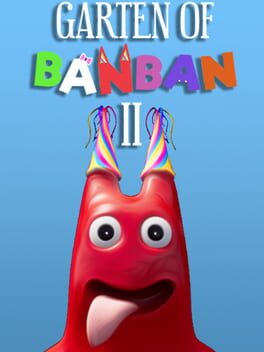
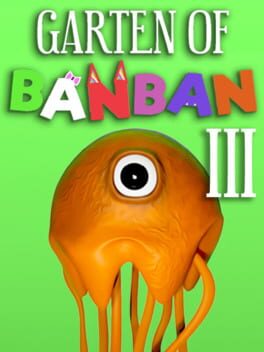
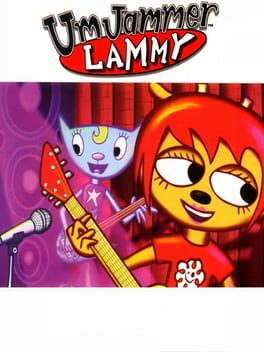
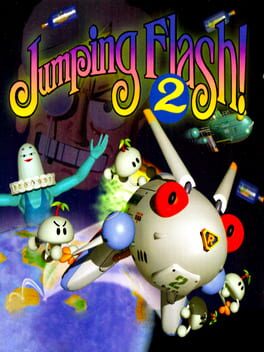
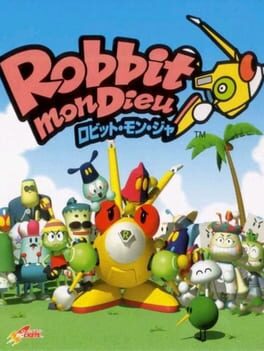
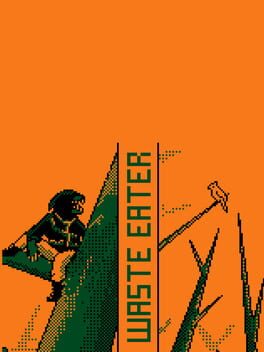
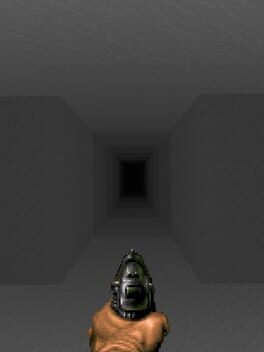
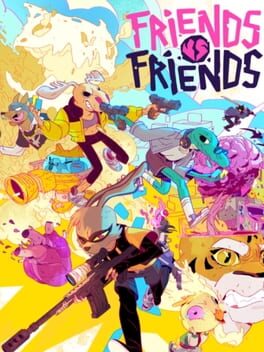
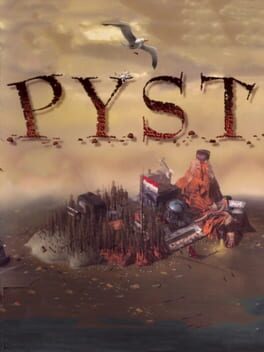
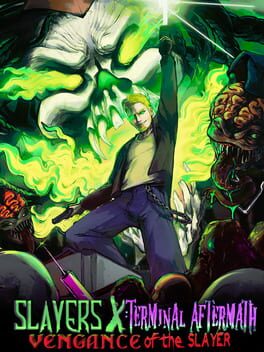
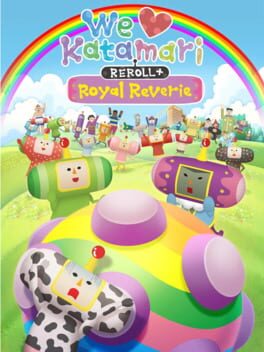
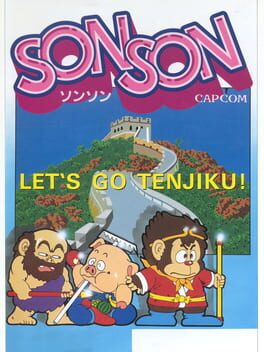
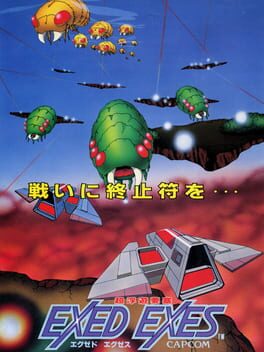

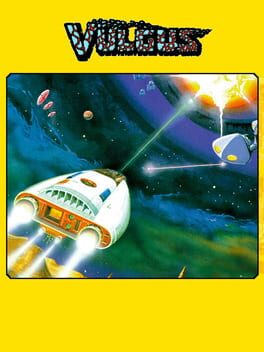

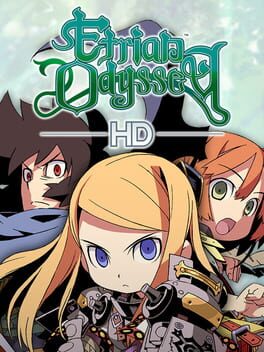
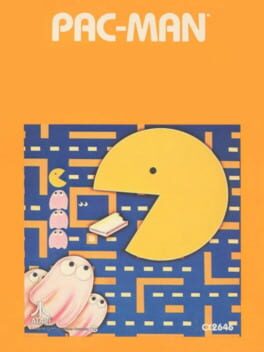
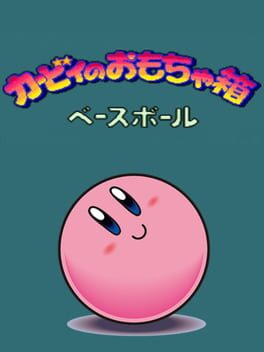
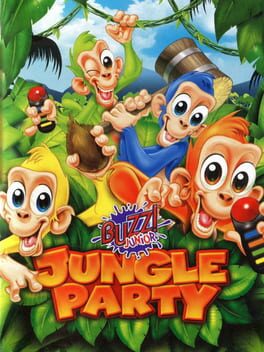
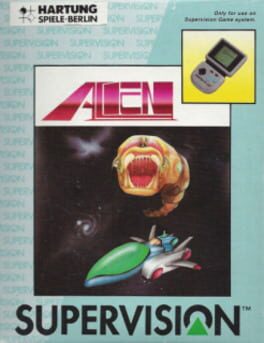
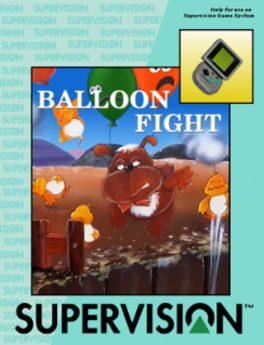
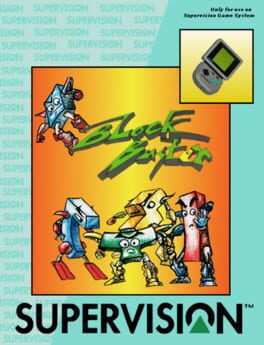
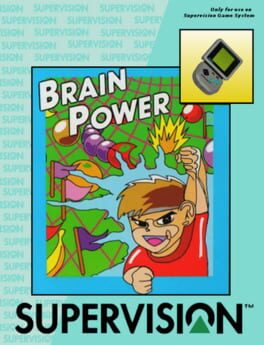
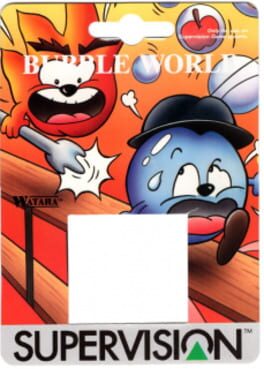
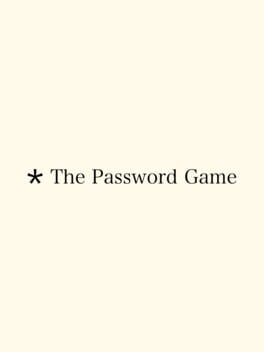
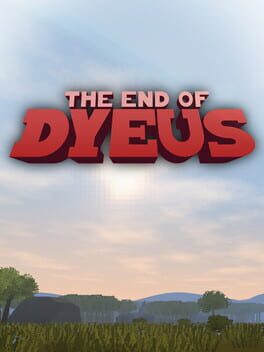

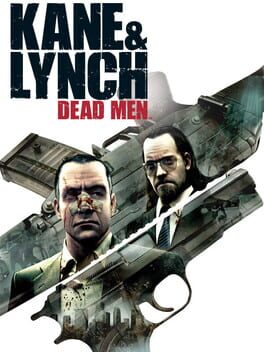
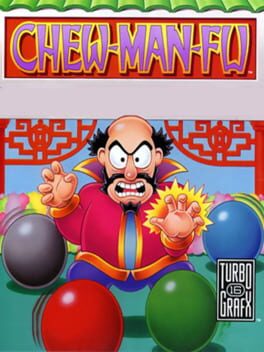


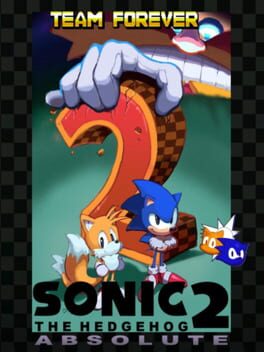




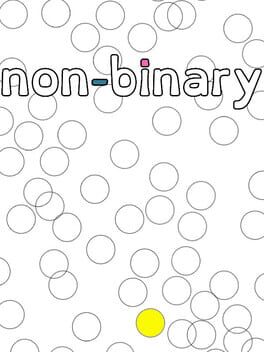



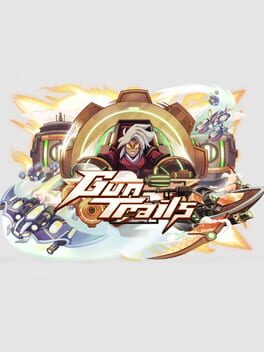


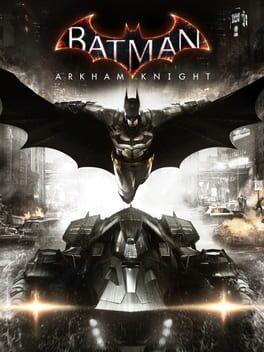


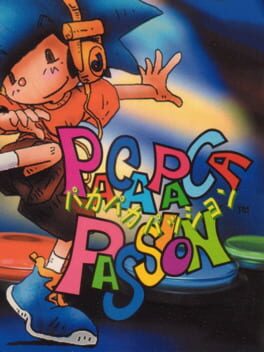
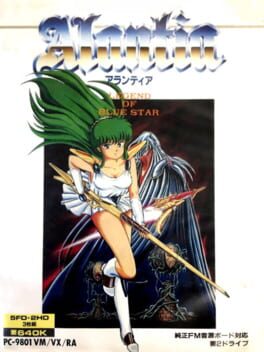
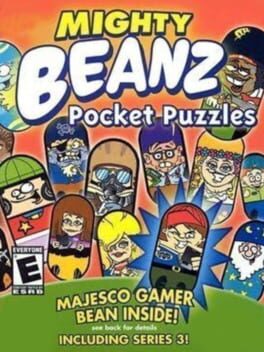
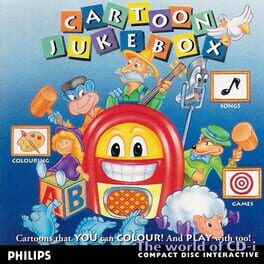


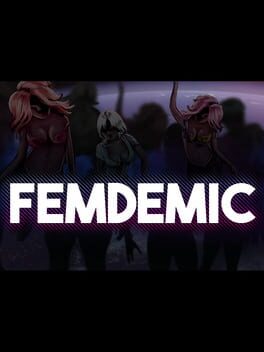


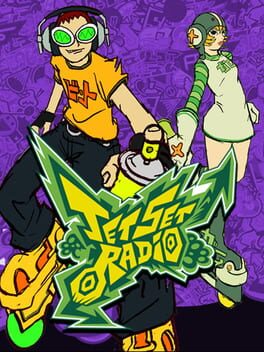
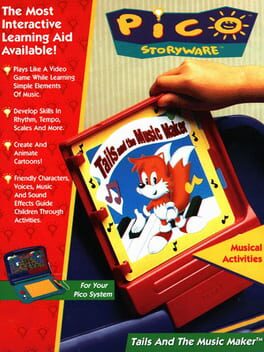


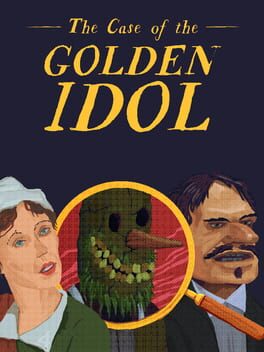

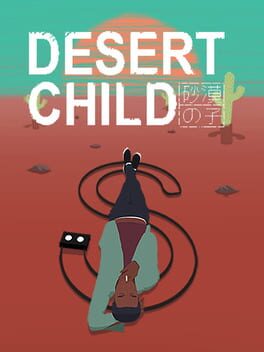


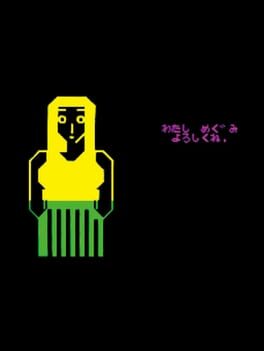

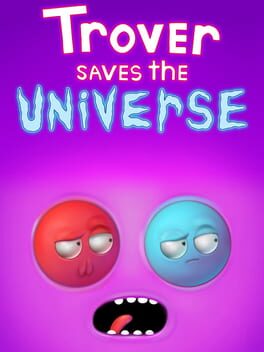



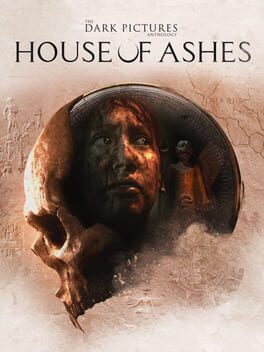
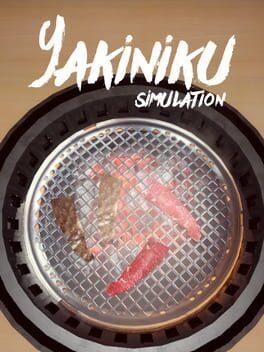


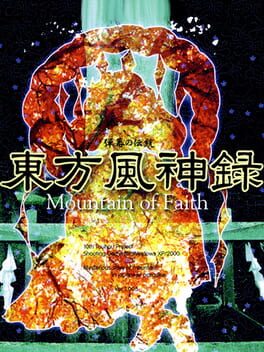
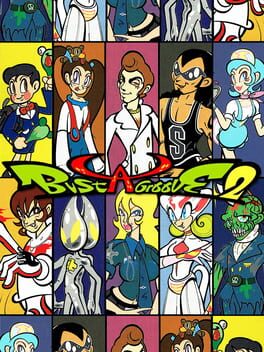
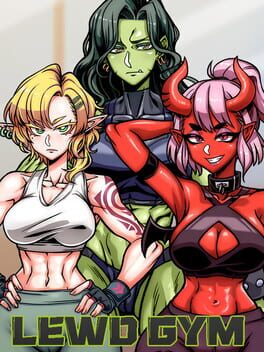




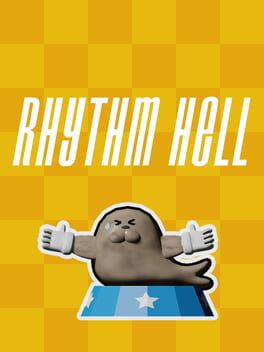
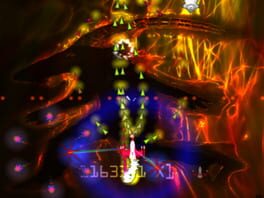



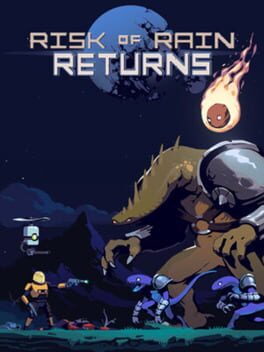
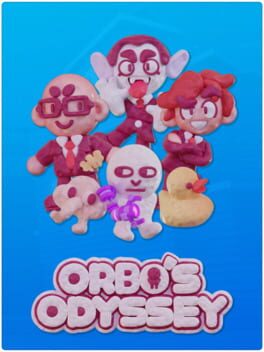


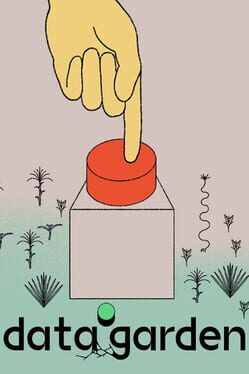
DeemonAndGames
4 months ago
For real tho I'm so glad you made this, I didn't even know you made a follow up to your 177 review so early in the year until I just saw it here, same things goes for a ton of reviews I hadn't checked out till now. Amazing year full of amazing reviews, that's something that I could say about a ton of the talented people on here (which is a lot) but your works are always a fantastic read and an inspiration for me and I'm sure also for many others. Excellent work!